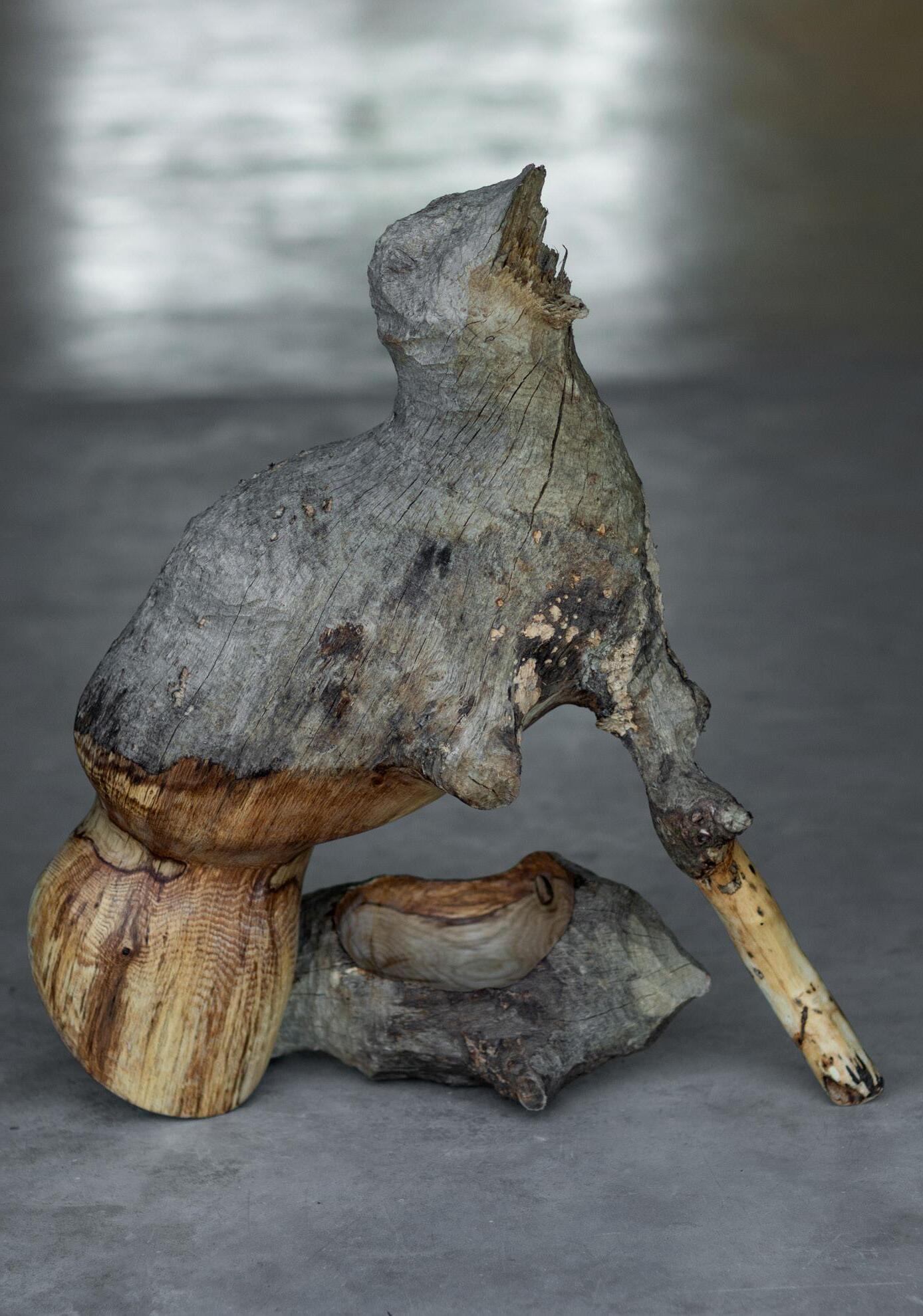zq³³
vol 1 | 2023







Editors
Norbert Hoeller
Tom McKeag
Marjan Eggermont
Contributing Editors
Adelheid Fischer
Kristen Hoeller
Raul de Villafranca
Manuel Quirós
NOUS Ecossistema
Offices
Calgary
San Francisco
Toronto
Mexico City
Phoenix
Madrid
Brasília
Contact
info@zqjournal.org
Cover art
Cover: Maya Ronchetti Derowen
Creature | Solid Beaver chewed English
Oak | Photo: Goodrest Studios, https:// goodrest-studios.co.uk/ | pp. 2-3/pp.
114-115: North American Beaver | Tim
Lumley, 2020 | Flickr cc
Design
Marjan Eggermont
Web
Colin McDonald
Norbert Hoeller
Creative Commons License
CC BY-NC-ND
ISSN
1927-8314
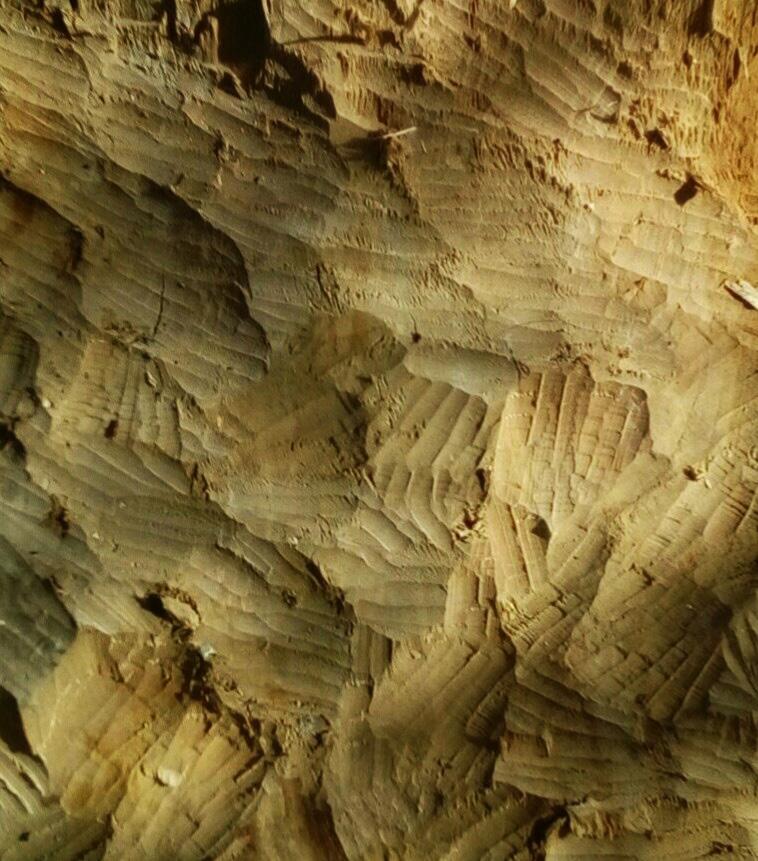 The traces of beaver teeth on wood
The traces of beaver teeth on wood
In this issue we take you to watery environments, both real and imagined, and introduce you to some wondrous creatures.
A scientist and an artist describe how humans might interact with one of the world’s most fascinating animals in Collaborating with Beavers. Rob Dunn relates the surprising ecological results when engineers saw their “daylighting” of a local stream enhanced by their furry colleague and Maya Ronchetti presents wood sculptures touched by both human hand and beaver tooth.
NOUS Ecossistema presents two artist studios from Brazil, Estudio Laborg and the late Brigida Baltar to show how they have provoked public awareness of water in Poiésis and Ancestry as Trajectories of Water in the exhibitions Rios Des Cobertos (Uncovered Rivers) and Coleta de Neblina (Fog Harvesting).
We share the work of researchers emulating the mangrove, a champion of removing salt from seawater in The Pinch of Salt: Mimicking the Mangrove to Slake the World’s Thirst. The Elimelech lab at Yale University is a leader in the efforts to make desalination more efficient and effective, and they do it by studying nature with all the tools and rigor that science can provide.
Henry Dicks and Randall Anway engage in a spirited philosophical discussion of the

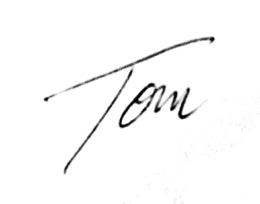
potential of biomimicry as a movement and practice. This follows our recent review of Dicks' new book, The Biomimicry Revolution.
Norbert Hoeller and Richard James MacCowan review W. Brian Arthur’s book, The Nature of Technology, and offer examples of how bio-inspired design work may fit into this broader view of technological and cultural evolution.
In an esoteric response to our interview questions, cultural festival producer Carlos Mora tells us about the Somos Aqua exhibition and his work highlighting the importance of water in Mexican culture.
Heidi Fischer continues her Science of Seeing series with a paean to the Dung Beetle in An Inordinate Fondness for Beetles Go with her for a trip through a short history of the human fascination with scarabs, and why this attention is so richly deserved.
Happy reading!

Article: The Pinch of Salt: Mimicking the Mangrove to Slake the World’s Thirst
Tom McKeag
8
Article: Collaborating with Beavers

Rob Dunn
28
Interview
Maya Ronchetti
40
Portfolio: Poiésis and ancestry as trajectories of water
Curated by Nous Ecossistema
54
The Science of Seeing: An Inordinate Fondness for Beetles


Adelheid Fischer
70
Perspectives: The Biomimicry Revolution


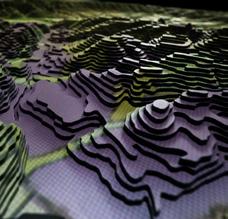
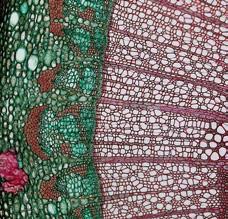
Henry Dicks and Randall Anway
82
Portfolio: Somos Agua
Carlos Mora
96
Book review: The Nature of Technology by W. Brian Arthur

Reviewed by Norbert Hoeller and Richard James MacCowan
106
 The beauty of surviving mangroves after Odette | Barangay Cayhagan, Sipalay City, Negros Occidental
The beauty of surviving mangroves after Odette | Barangay Cayhagan, Sipalay City, Negros Occidental

The world’s populations are finding it harder and harder to obtain clean drinking water, thanks to a changing climate, industrial pollution, destruction of natural watersheds, and competition for supplies. Increasing the supply of fresh water has become an urgent issue in much of the world, and research scientists have devised some innovative, nature-based ways to expand our supplies. The largest potential source is the ocean, making up 97% of the available water resources on earth. There is, however, one small problem: it’s the salt.
Typical ocean water has a salinity of 33-37 grams per liter (or parts per thousand, ppt), and it is too laden with sodium chloride to be healthy to drink. Most animals and plants are unable to absorb this saline mix. Salt water is toxic to humans for a number of reasons. The first stems from the bipolar nature of water itself. Large oxygen atoms within the water molecule have a negative charge and the hydrogen atoms in the molecule have a positive charge. These polar charges make it easy for water to combine with other charged molecules, like sodium chloride, as opposite electrical charges attract each other. Stirring several tablespoons of salt into a glass of water is a way to demonstrate this: the salt quickly dissolves into the water. Now, if you take
this very salty water and drink too much of it these same sodium chloride atoms will contact the cell membranes in your body and start to pull the water out of your cells, as the freshwater molecules strive to bond with the salt in your drink. Your kidneys will be working overtime to rid your body of the salt now in your blood. They will be creating as much excess urine as possible to do this, but if they do not receive freshwater, you will become dehydrated and a steady diet of the salty stuff will lead to death.
In a world thirsty for freshwater, taking the salt out of seawater is one of the most promising ways to increase our supplies for drinking, growing food, and washing. Desalinated water production worldwide has been estimated by Jones et al in 2018 to be over 95 million cubic meters per day at over 15,000 plants in 177 countries, with 48% of this production amount occurring in the Middle East and North Africa. This conversion comes with some significant costs, however; chief among them those associated with energy use, fouling of filters and the disposal of the brine byproduct. There are four traditional ways to take the salt out of water. Desalination can be done
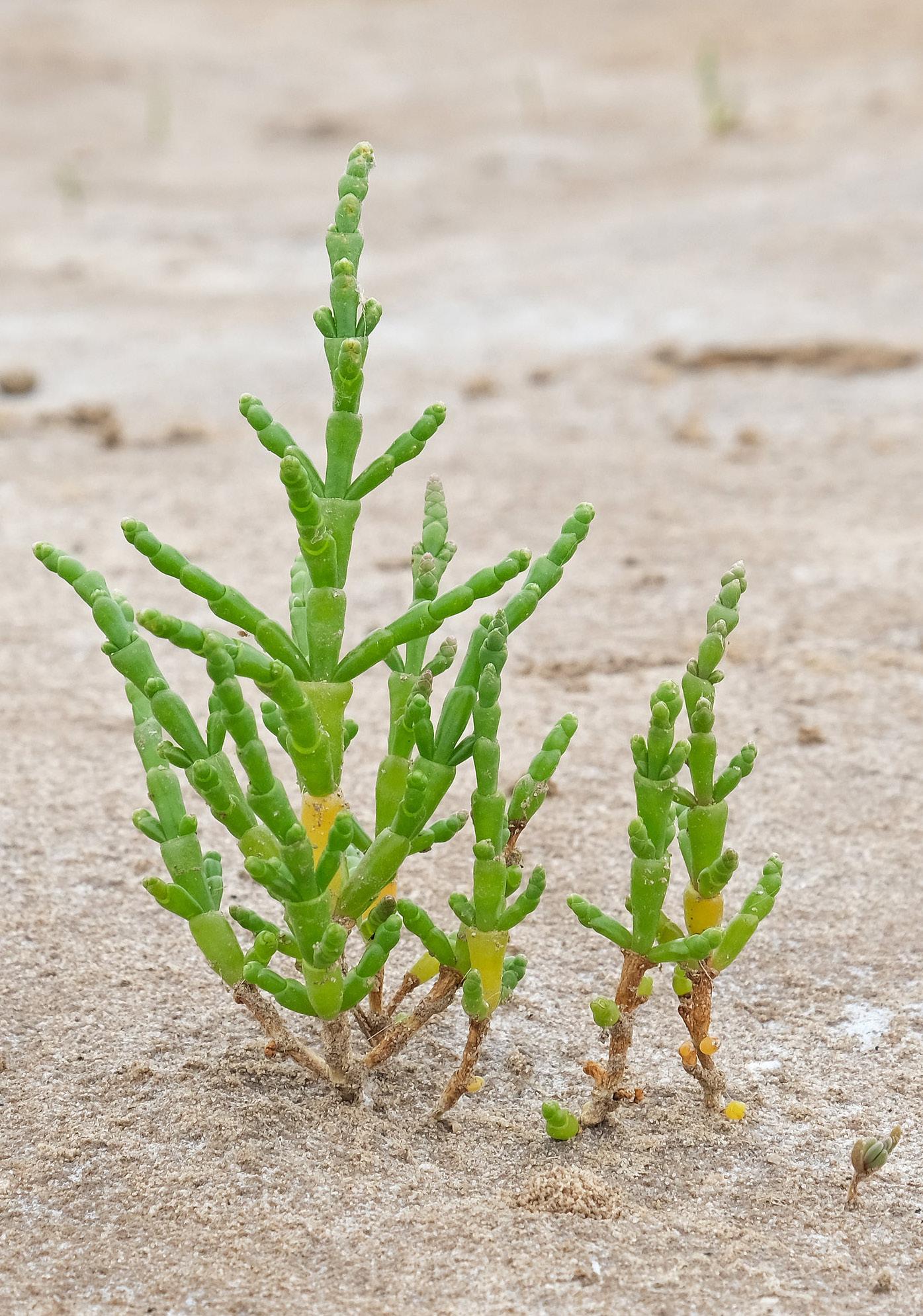
The Pinch of Salt:
the
Tom McKeag by distillation, multi-stage flash processes, electrodialysis, and reverse osmosis.
In distillation, liquid seawater is heated to enact a phase change to water vapor, which is then cooled to condense back into a liquid, leaving behind its former mineral ingredients, like salt.
Multi-stage flash processes boil a portion of the intake seawater into steam in several stages of what are basically countercurrent heat exchangers. Cold intake water is heated to near maximum and then passed from chamber to chamber of increasingly lower temperatures and pressure. The higher pressure water entering each chamber will boil off some of its volume and the condensate collected as well as the heat.
Electrodialysis (ED) uses an electrical potential difference to draw salt ions out of seawater. This electrical “delta” is created by passing a current through anion and cation exchange membranes, and the intake water is stripped of its salt, as the membranes collect the negative ions of chloride, migrating toward the positive anode, and the positive ions of sodium migrating toward the negative cathode.
In reverse osmosis (RO), water is forced by pressure through a semipermeable membrane to block the larger molecules of dissolved and suspended material while allowing the water molecules to pass
a
through. It is deemed “reverse” because the employment of pressure causes the opposite flow to what natural osmotic pressure would create. In nature, water typically flows across a membrane from an area of low solute concentration (high water potential), to an area of high solute concentration (low water potential). RO switches this flow direction.
All of these methods require energy in varying degrees, and it is this energy cost, as well as issues of capital and maintenance cost, that have shaped their relative adoption and deployment. The two most common techniques for desalination that have been brought to industrial scale are distillation and reverse osmosis (RO).
Solving the energy cost issue at scale is a significant challenge and for this reason many researchers have studied the more passive techniques used by plants and animals. Membranes are key. Different membrane-based methods include omniphobic membranes, immobilized carbon nanotubes, titania ceramic membranes, and silica nanoparticle incorporated poly(vinylidene fluoride) membranes. The recent progress in nanotechnology and materials science has made many of these membranes possible.
 The El Prat Desalination Plant, a seawater reverse osmosis facility near Barcelona, Catalonia
The El Prat Desalination Plant, a seawater reverse osmosis facility near Barcelona, Catalonia
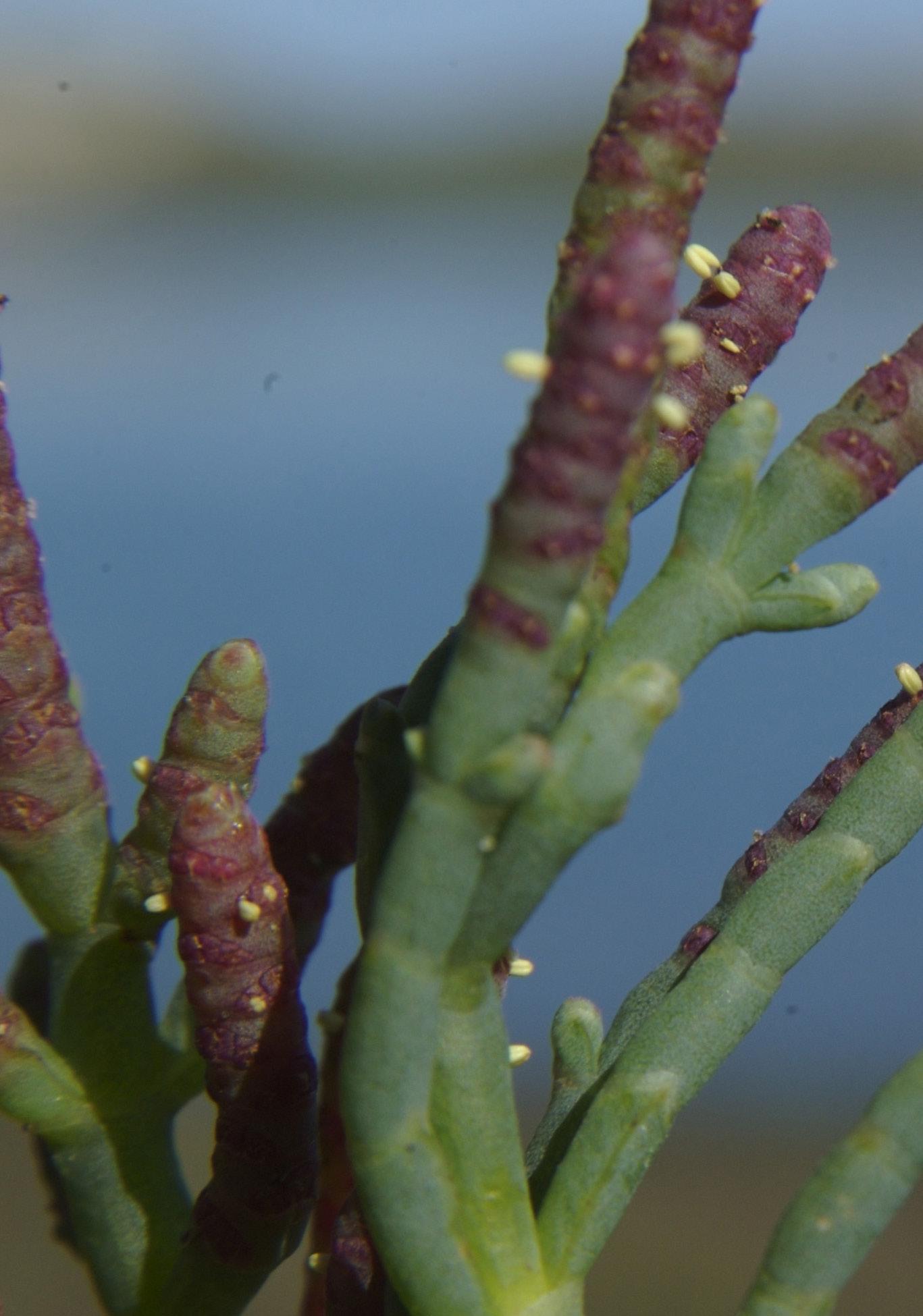

Tom McKeag Salt adapted organisms may show a way to a greater water supply
Not all organisms are afflicted with an intolerance of salt. A significant segment of the planet’s biota is adapted to it and they exist quite happily. Many marine mammals, pinnipeds and cetaceans for example, are able to process high amounts of salt through their reniculate, or many-lobed, kidneys, and several seabirds, such as gulls,

are able to excrete salt through glands in their noses.
Certain plants have also adapted to the salty regimes; these are the halophytes. Terrestrial plants that live in the intertidal zone are especially adept. Mangroves, found in the tropical and semi-tropical latitudes, and Salicornia, found in the northern saltmarshes, have evolved ways to filter and excrete the excess salt. Salicornia, or Pickleweed, can concentrate salt into its tips that eventually wither and drop off, saving the rest of the plant.
Mangrove forests, or mangals, are complex and productive ecosystems, providing the foundation of the coastal food web and habitat for thousands of species, as well as a dissipating, physical barrier to eroding wave action. The mangrove wetland is one of the planet’s most efficient carbon sinks. Extensive tree roots slow water flow and increase deposition of sediment that stores this carbon, estimated to be equivalent to 21 billion tons of CO2. Mangals cover approximately 147,000 square kilometers of land worldwide, an area about the size of Bangladesh, according to a year 2020 count by the Global Mangrove Watch Database. The approximately 80 general species of mangroves and associates dominate the tropical and subtropical coastal wetlands of the world, with most growing between
Schematic root systems of three different mangrove genera Photo: AspidistraK, 2018 | Wikimedia CommonsLatitude 5 degrees North and Latitude 5 degrees South.
Mangrove species have three different strategies to adapt to too much salt: exclusion, excretion and accumulation. Researchers typically classify mangrove species as either secretors or non-secretors. The latter block salt from entering the plant, while the former actively work to get rid of it after it has entered. Rhizophora (the red mangrove) and Bruguiera, are able to block as much as 90 percent of salt in the seawater or soils in which the plants live. By contrast, secretors like Avicennia (black mangrove) are able to take up saltier water, use it and secrete salt crystals through its leaves.
Some mangroves use ultrafiltration of seawater in their roots, and like most plants, set up a vacuum of sorts within their stems to draw water from below. As leaves transpire water, a negative pressure is created of as much as 60 atmospheres, and the highly solute seawater is drawn through the membranes in the roots, following the natural path towards lower pressure. This is all powered by transpiration, and the plant maintains this gradient or tension within its xylem by the existent intermolecular forces of adhesion and cohesion of the water itself. At its base in the roots the plant runs the water through a purely physical sieve, a
triple layered pore structure in its epidermis. The highly negative pressure in the plant overcomes the osmotic pressure of the saline water that is taken up by the plant. Without this negative pressure the plant’s fresh water would be sucked out of it by the more concentrated seawater. This whole concept of water uptake is known generally as the cohesion-tension theory.
Like Salicornia, other mangrove species have adapted to accumulate rather than
 Avicennia germinans/black mangrove salt crystals excreted by leaf
Photo: Sam Fraser-Smith, 2009 | Flickr cc
Avicennia germinans/black mangrove salt crystals excreted by leaf
Photo: Sam Fraser-Smith, 2009 | Flickr cc
completely exclude salts, and then to excrete them. This they do through microscopic glands in their leaves. First they filter water intake to about one-tenth the salinity of the seawater and then excrete the salt from this through the glands. The glands are dense factories of metabolic activity at the cellular level.
Much research has been done on mangroves because of the plant’s ability to process seawater efficiently in what is essentially a reverse osmosis process. This process is ultimately powered by the energy of the sun. The sun is what heats the plant at its leaves and evaporates the water being transpired at the stomata of the leaves. This is what creates the negative pressure within the plant’s internal transport system that draws the water up from the roots. Such a passively generated capillary action, if it could be brought to scale, would be extremely valuable to engineers wishing to solve the energy cost problem endemic to current desalination processes.
The Elimelech group at Yale demonstrated in 2020 that reverse osmosis (RO), powered by the cohesion-tension principles, could be achieved through a synthetic nanoarchitecture mimicking the root, xylem
and leaf structures of the mangrove. In the natural mangrove, transpiration at the leaf creates capillary pressure in the substomatal cavities in the leaf. This pressure draws water up within the xylem of the plant; the water column is maintained by this negative pressure and the intermolecular cohesion and adhesion of water within the xylem channels. This negative pressure overcomes the natural osmotic pressure of the saline water outside the plant.
At the root’s outer membrane, seawater is drawn in through cell membrane channels called aquaporins. The plant ensures that the water and ions are filtered through the root cells’ membrane and aquaporins predominantly. It does this by making its endodermal cell walls impermeable with a waxy substance called suberin. The cell membrane controls the uptake of the watercarried ions which must pass through the aquaporin channels, and not through the hydrophobic lipid bilayer of the membrane. In this way the plant is able to exclude as much as 99% of the salt within the seawater. After permeating the membranes, water is passed cell to cell via the intracellular cytosol and then into the xylem for transport up the stem to the leaves.
Capillary action within plants is impressive. Powered by the sun, giant sequoias, for example, are able to pull water up

 Woody Dicot Stem: Three Year Tilia |
Woody Dicot Stem: Three Year Tilia |

nearly 100 meters. The mangrove must exert at least 25 bars of negative pressure to overcome the typical osmotic pressure of seawater. A bar is a metric unit of pressure slightly less than one atmosphere and is equal to 100 kPa, or 14.50 pounds per square inch (psi). An atmosphere is the pressure exerted by the weight of air at sea level at 15 degrees Centigrade. The water surface tension of menisci formed in nanopores with a diameter of 20 nm can generate a negative pressure of −150 bar in xylems, root cells, and leaf cells.
The team at Yale sought to model the mangrove with functional synthetic
components for the leaf (capillary drive), stem (maintenance of the water column) and root (desalination filter) of the plant, and thereby to demonstrate a functional reverse osmosis process. They fabricated leaves of nanoporous anodized aluminum oxide (AAO) membrane or a poly(hydroxyethyl methacrylate)–based hydrogel, a stem of porous fritted silica filter, and a root of polymeric RO membrane. These materials would have to be analog to the living model in a number of ways: pore openings, water contact angle, and relative permeability. Moreover, temperature,
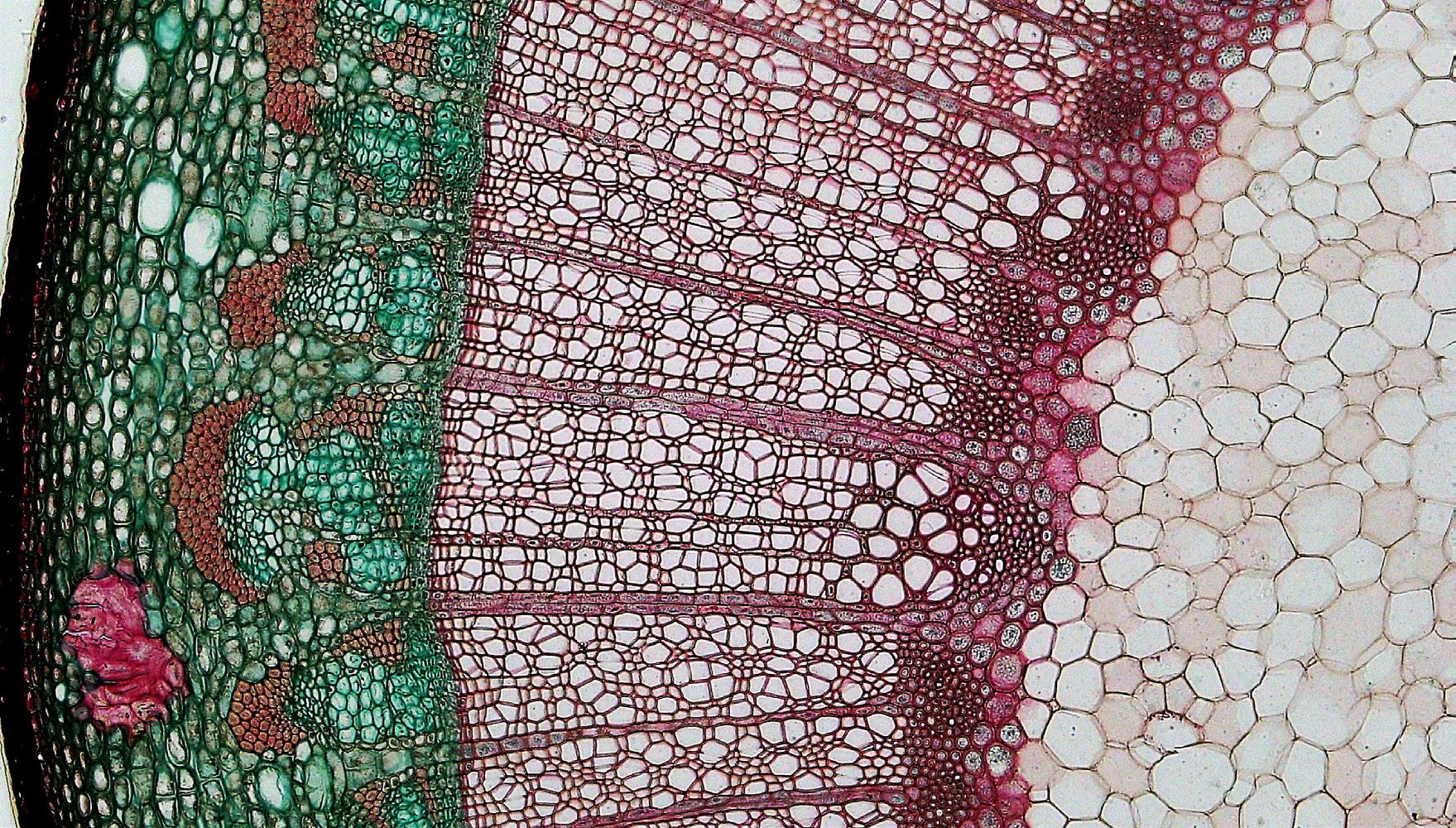 Woody Dicot Stem: Proto and Metaxylem in One Year Liriodendron
Photo: Berkshire Community College Bioscience Image Library, 2017 | Flickr cc
Woody Dicot Stem: Proto and Metaxylem in One Year Liriodendron
Photo: Berkshire Community College Bioscience Image Library, 2017 | Flickr cc
humidity and ambient pressure would have to be tightly controlled.
Direct translation of the functionality of the mangrove had its limits. For example, metastable water columns are subject to developing air bubbles that can interrupt the flow of water within the xylem. This cavitation can be a major dysfunction; if the vertical chain of water molecules is broken, fresh water does not get to the leaves, and the negative pressure of capillary action, and the resultant desalination, stops. The plant has a number of ways to avoid or mitigate the problem, however.
As in many nature solutions, it is done by solving a contradiction. The easiest way to minimize the pressure drop in convective flow is to make larger diameter transport vessels, but the best way to minimize cavitation is to make smaller diameter vessels. The plant solves this by interconnecting a vertical and horizontal “grid” of very small diameter (less than 50 microns) chambers of dead cells. Between these chambers are “pit membranes,” which connect each chamber and have small hydrophilic O (10 nm) pores to stabilize water-air interfaces in the event of cavitation. This also allows water to flow around any air-filled chamber. As a living organism, the plant also has the capacity for
ongoing responsiveness, and thus the ability to rewater chambers blocked with air.
This complex, adaptive structure was beyond the design brief for the engineering team and they devised a relatively simple substitute, a silica frit with a nominal pore size of 0.9 to 1.4 microns. The frit satisfied the basic requirements for hydrophilicity, permeability and heterogeneous pore size distribution thought to encourage stabilization of entrapped air.
The team paid close attention to the evaporation rates occurring at the synthetic leaves, establishing a baseline using deionized water, and then tracking filtration at the synthetic root using dyes. Capillarydriven water uptake, salt (NaCl) rejection, and osmotic pressure were monitored as the team gradually increased the salt concentration of the saline solution input.
For a higher flow and desalination volume, the researchers developed a hydrogel-based leaf membrane. They filled a macroporous polyvinylidene fluoride (PVDF) membrane with poly(HEMA); polymerized the monomer, cross-linker and photoinitiator with UV light and immersed in water. They were able to achieve a much more stable operation and salt rejection of 74% and negative pressures of -338 bar, over four times the typical negative pressure of
 Tom McKeag
Tom McKeag
RO, even with a hypersaline solution of 5 M NaCl.
Thus the team demonstrated the effective desalination of saline and hypersaline water by a capillary-driven process with large negative pressures. This supported the cohesion-tension theory of water transport
in plants, and their device achieved unprecedented negative pressures using this passive, nature-inspired mechanism.
Much work still needs to be done to develop a device that could remove salt from seawater at scale, as this project has revealed several challenges. Two are the
The mangroves of Okinawa - a little island of young trees along the Oura river Photo: Okinawa Soba (Rob), 2014 | Flickr ccprevention or mitigation of cavitation, and the still-present need for thermal energy to run the device. More complex, adaptive structures for synthetic xylem may solve the former, and this work will serve as a foundation for any further explorations. Thermal energy, whether from the sun to run the evaporation that drives the capillary action in the mangrove, or manmade heat to drive more traditional thermal desalination, would have to be harnessed in a way that was cost competitive with current desalination operations. For the present, that answer may lie beyond the actual filter device, such as in industrial heat recapture, or concentrated solar arrays.
Despite these challenges, there can be a reasonable expectation of further progress in bringing passive desalination to scale: new types of membranes that present electrochemical rejection of salt, for instance, are examples of technologies about to be combined into systems that could be successful. Even more important may be the gaining of new insights into how, exactly, filters work the way they do.
The Elimetech lab has recently refuted a longstanding theory of how solutions flow across membranes in RO, the so-called solution-diffusion model, which assumes a uniform condition across material and flow, with ions migrating to conditions of lower
concentration. The team at Yale doubted that water molecules, which need a lot of energy to break apart, would be suffusing as individual molecules through a typical RO membrane. They studied the pressures at the entrance and exits of membranes and found them to be different, and that the pores were interconnected and changing, leading them to conclude that pressure and pore architecture are key to the travel of not individual water molecules, but clusters of them.
This is very important news in the world of desalination, as it offers a new framework for making more efficient filters that can save energy and be tuned for selective filtration of pollutants. This could bring costs down, or value propositions up, in, for example, the filtering of chemicals that currently escape basic RO processes. The world is in great need of clean, potable water, and the scientists who are learning from nature are bringing it closer to those in need. ⊗
We would appreciate your feedback on this article:
The Pinch of Salt: Mimicking the Mangrove to Slake a World’s Thirst
Tom McKeag1. P. B. Tomlinson (1986) The botany of mangroves. (book)
2. Spalding, Kainuma, and Collins (2010) World atlas of mangroves. (book)
3. Duke, Ball, and Ellison (1998) Factors influencing biodiversity and distributional gradients in mangroves. Global Ecology and Biogeography.
4. Yuan, F., & Wang, B. (2020). Adaptation of recretohalophytes to salinity: Salt secretion and salt gland development. Handbook of Halophytes: From Molecules to Ecosystems towards Biosaline Agriculture, 1-21.
5. Wang, Y., Lee, J., Werber, J. R., & Elimelech, M. (2020). Capillary-driven desalination in a synthetic mangrove. Science advances, 6(8), eaax5253.
6. Leal, Maricé and Spalding, Mark D. (editors), 2022 The State of the World’s Mangroves 2022. Global Mangrove Alliance.
7. Edward Jones, Manzoor Qadir, Michelle
T.H. van Vliet, Vladimir Smakhtin, Seong-mu Kang, The state of desalination and brine production: A global outlook, Science of The Total Environment, Volume 657, 2019, Pages 1343-1356, ISSN 0048-9697, https://doi. org/10.1016/j.scitotenv.2018.12.076
8. Kim, K., Seo, E., Chang, S. K., Park, T. J., & Lee, S. J. (2016). Novel water filtration of saline water in the outermost layer of mangrove roots. Scientific reports, 6(1), 1-9.
9. Wang, L., He, J., Heiranian, M., Fan, H., Song, L., Li, Y., & Elimelech, M. (2023). Water transport in reverse osmosis membranes is governed by pore flow, not a solutiondiffusion mechanism. Science Advances, 9(15), eadf8488.
10. https://www.science.org/doi/10.1126/ sciadv.adf8488
11.https://seas.yale.edu/news-events/news/ upending-decades-long-theory-reverseosmosis-water-desalination, https://www. science.org/doi/10.1126/sciadv.adf8488
12. https://www.wired.com/story/ everyone-was-wrong-about-reverse-osmosis-until-now/
 Mangrove sapling |
Mangrove sapling |
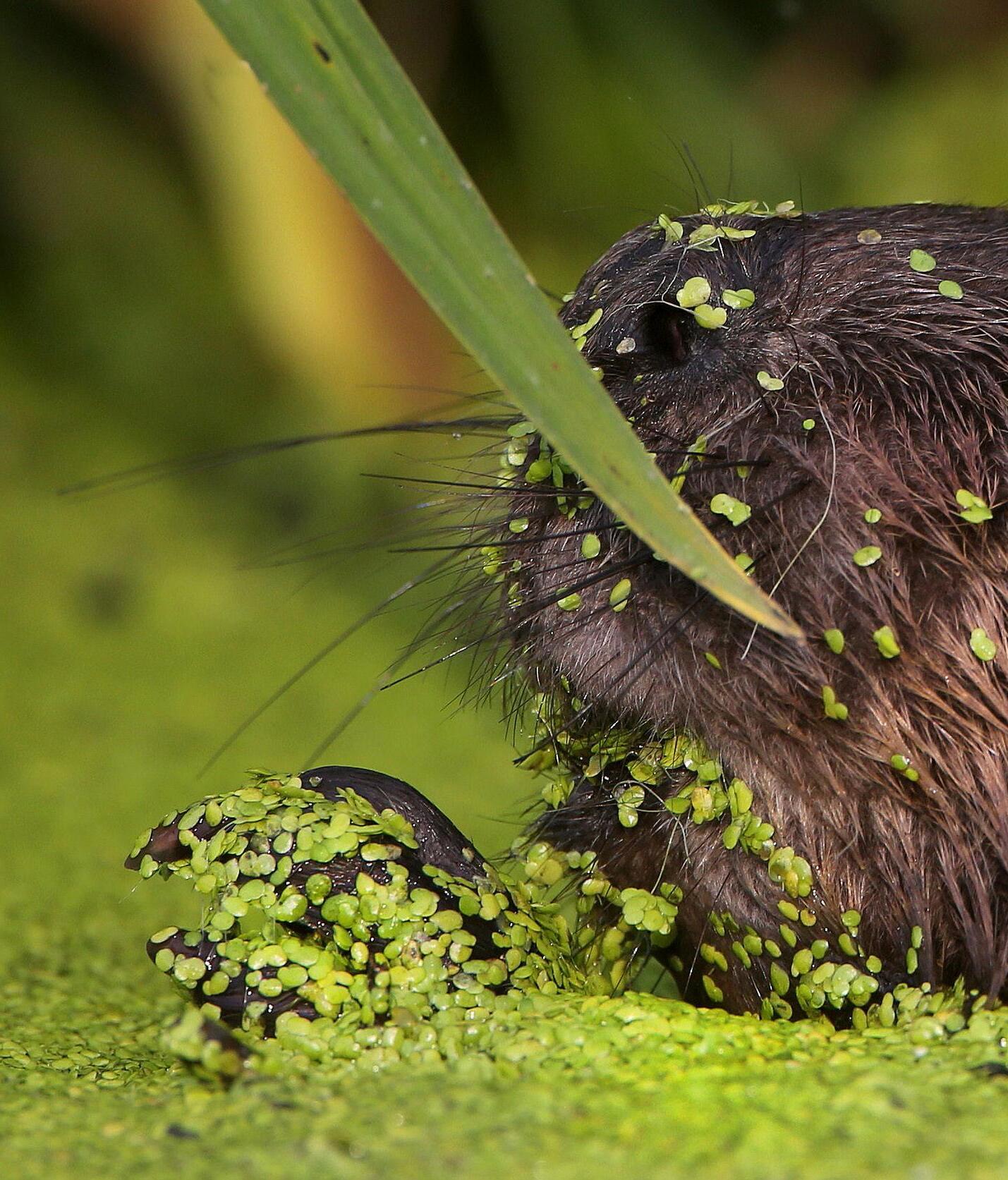 Beaver
Photo: Nigel, 2015 | Flickr cc
Beaver
Photo: Nigel, 2015 | Flickr cc

I have a long history with beavers. When I was growing up, I lived on a lake that was fed from a pond that exited into the lake via two culverts. The pond’s beavers could hear the sound of the water pouring through those culverts and it bothered them deep in their rodent-brains. They did the only thing they could. They jammed the culverts with sticks, logs, mud, and beaver shit. My job as a teenager was to crawl into the dry side of the culverts and remove this improvisational dam. In the best of situations, the result was that the water began to rush through the culvert, flushing me and all of the detritus of the dam out.
Later, after I had graduated college, finished my PhD, and been hired at North Carolina State University, I befriended the expert on rare butterflies, Nick Haddad. At about the same time, Nick was informed that a full time technician would be funded to work with him. This was the good news. The administrative gods had showered opportunity upon Nick. The more complicated news was that the technician, Dave Woodward, AKA Woody, would need to work on snakes or beavers. Woody had previously helped with snake research projects at NC State. Beavers were his side hustle; Woody would trap and kill, or more euphemistically, “remove” beavers for those who needed it done. Like many trappers, Woody had a
love for his quarry. He had a soft spot for beavers. As Nick recently told me, Woody once adopted a baby beaver. “It was quite docile,” and “Woody loved it.” But then one day when the beaver was about a year old, Woody came home and the beaver had gnawed a leg off Woody’s kitchen table. As Nick put it, Woody’s wife, Nancy, then made him “remove” that beaver too.
Woody’s expertise in and focus on beavers was a problem for Nick inasmuch as, again, Nick studies butterflies. It took a few years before Nick realized that the intersection of Woody’s abilities and butterflies was a significant one. The populations of the endangered butterfly that Nick studied, the St. Francis Satyr, could be partially restored through the introduction of beavers to habitats. The beavers dammed creeks and streams, created wetlands, and, in doing so, favored the plant on which the St. Francis Satyr depends. Populations of the St. Francis Satyr are now creeping back thanks to Woody, Nick, and beavers.!
Nick and Woody were, in this little example, working with each other and with beavers. But “working with” may be an insufficient description of this relationship. Recently, I was sent an email featuring the work of an artist, Maya Lamoine Ronchetti who collaborates with beavers.2 The artist recovers pieces of wood that have been
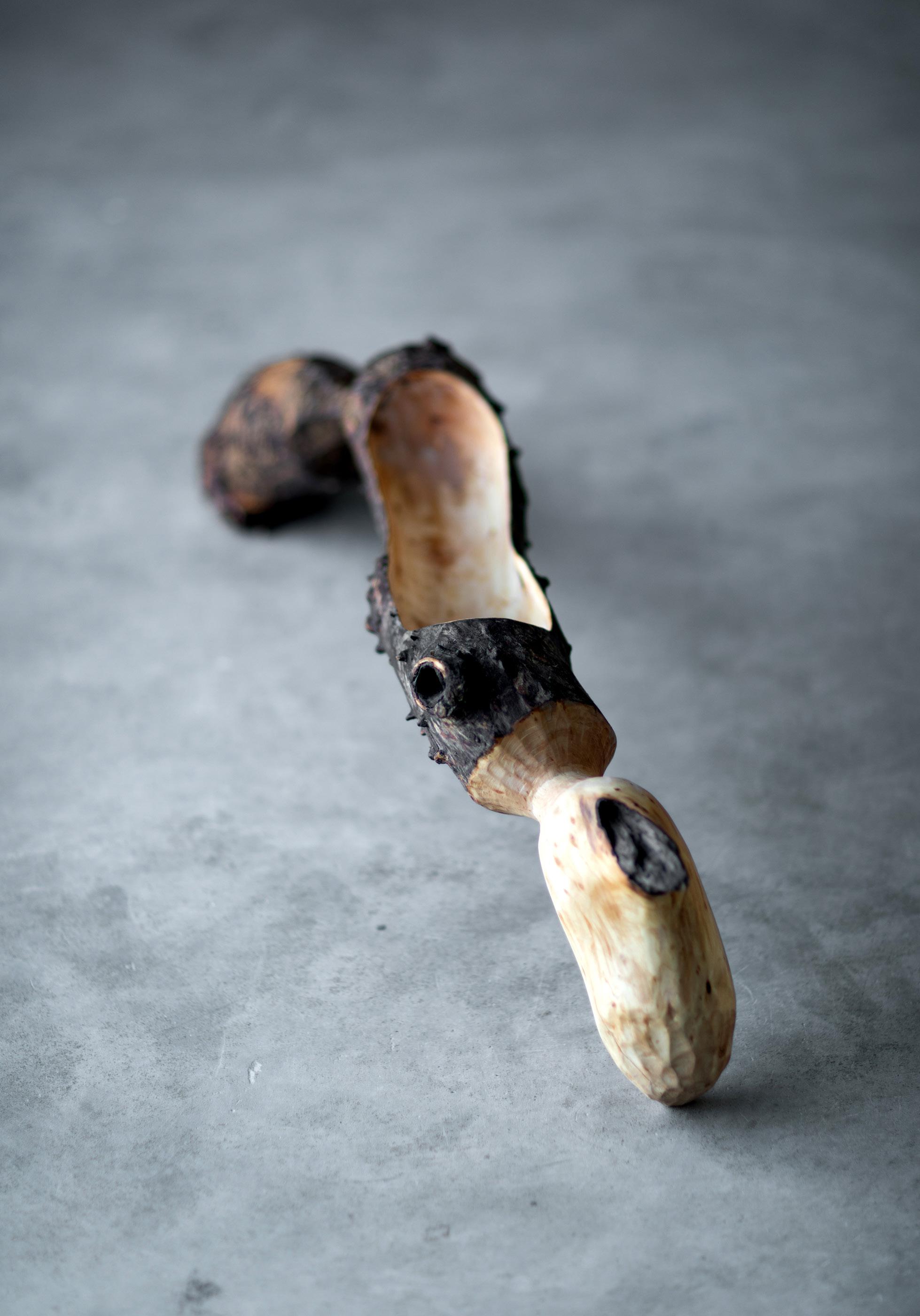 Willowing Seed by Maya Ronchetti | Approx. 120cm long | Beaver chewed Willow wood |
Willowing Seed by Maya Ronchetti | Approx. 120cm long | Beaver chewed Willow wood |
 From Equal Parts & Hole Parts | Beaver chewed Willow wood | Maya Ronchetti |
From Equal Parts & Hole Parts | Beaver chewed Willow wood | Maya Ronchetti |
chiseled by a beaver. She then works with what the beaver has done to the wood in such a way that the work of the human artist, the beaver, and the tree itself are not fully distinguishable. Superficially, to call this relationship a collaboration might seem a little unusual. The beaver doesn’t know it is collaborating. Nor does it intend to make a particular kind of art. And yet this project tangles with an idea that is much bigger than its immediate products, the idea of working with non-human species to create works that would otherwise be impossible.
All of this came to mind recently because I have had the chance to walk, near daily, past the home of a beaver who has begun to collaborate with a group of engineers. In this case, the engineers did not reshape logs that had been carved by a beaver. Instead, they shaped a river and then let the beaver respond.
North Carolina State University sits in the watershed of Rocky Branch. Rocky Branch begins in a pond on the campus of nearby Meredith College then passes through a historically African American community called Method Road.3 Here, much of the creek is hidden somewhere beneath concrete, covered up by an urban landscape. Rocky Branch eventually emerges through a culvert on the east side of the Method Road community. From there,
it travels alongside a road, past some administrative buildings, the dairy building (where Howling Cow Ice Cream is made), the university gym, and the university track. Then, it ducks under Western Boulevard, only to resume its travels east alongside that same, wide, road onward toward downtown Raleigh, the Neuse River and, hundreds of miles later, the Atlantic Ocean.
A number of years ago, the stream, which had been in quite bad shape, was partially lifted up from beneath cement and restored. Like many stream restorations, this one increased the natural features of the stream, while also dealing with the realities of the human-built environment through which it moved. This process, led by a group of engineers, engendered a much more natural stream and yet, as is often the case with engineered creeks and rivers, one that was relatively straight, with few opportunities to meander or slow down. Modernity is ill-suited to the natural peregrinations of streams and rivers.4
Urban streams, even once restored, suffer a number of ailments intrinsic to their circumstances and surroundings. Urban streams accumulate the waste of cities–runoff of pesticides, herbicides, oil, and whatever else. They also become “flashy.”
Urban streams are flashy because when it rains all of the water that falls on the
cement of the city pours, ultimately, into the stream. This causes the stream to become, quite suddenly, fast and deep. Then, after the rains, the stream becomes slower and more shallow again. In addition, because the runoff from rain is often heated by the cement over which it runs (the urban heat island effect), it comes into the stream hot.
Such was the case with Rocky Branch. As a result, the wild animals able to live on and in it were more than they had been before the restoration but many fewer than would have been found in the creek before the city was superimposed around and atop its watershed. The animal species that persist are those with the capacity to cling tight to rocks and tolerate extreme heat. In seventeen years of walking down this stream, I experienced relatively few surprising natural history moments. No herons. No turtles. No frogs. Few fish.
Then a beaver moved in. This was not a beaver in the abstract sense, not a representative of a species, but instead a specific beaver. Unlike many other beavers, this specific beaver was willing to dam a flashy urban stream. Even more unlike most beavers, this beaver was able to do so relatively successfully. We could ask why the beaver moved in now, this year. Perhaps it is because the trees along the restored creek have grown back enough so as to provide
material with which to build a dam. Perhaps not. What we do know is where the beavers in North Carolina came from, a few states north. After beavers were extinguished in North Carolina in 1897, they needed to be reintroduced. The beavers were shipped from Pennsylvania in 1937. This beaver was likely a descendant of that successful reintroduction rewilding of our state. That rewilding ultimately led to this beaver’s act of resistance.5
Beavers seem strange. Or maybe they just are strange. They have paddle-shaped tails with which they can slap out warnings on the water. They use their teeth as chisels to do basic carpentry, whether on trees or kitchen tables. They eat wood that, to all other mammals, is inedible (try to subsist by chewing your furniture, just try). From there, things get weirder. Beavers have a cloaca. Like birds, they have a single hole through which they excrete waste and reproduce. Just why this might be is neither understood nor studied. It just is. Male beavers have internal genitalia that become external only fleetingly, in order to reproduce. Beavers also have enormous glands with which they mark their territory. These glands appear to be filled with bacteria that produce the aromas that create the marks. And beavers have guts filled with bacteria that can gather (“fix”, scientists say) nitrogen out of

the air to compensate for the relative lack of nitrogen in the beaver diet.
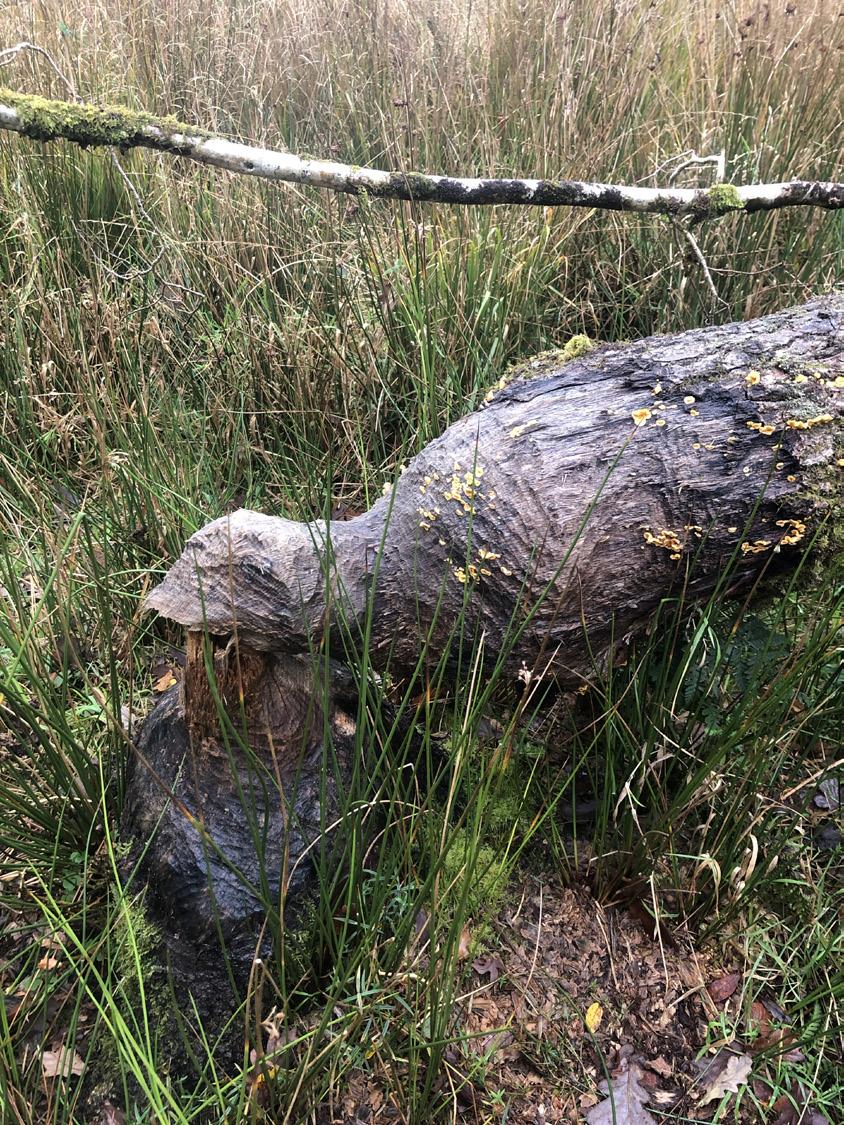
Modern beavers of the genus Castor evolved roughly eight million years ago in Europe. One population then made its way to the Americas over the Bering Sea land bridge - a long way to travel. In this period, somewhere deep in their brain they evolved a direct connection between the sound of running water and a need to stop that sound. In experiments done decades ago now, scientists were able to show that if the sound of running water was played from a
tape deck that beavers would try desperately to accumulate wood around the sound. Their need is ancient and specific.
In the case of the specific beaver along Rocky Branch, the need of the beaver to stop the sound of running water yielded a simple but lovely dam and, alongside it, a lodge. Thanks to a research project on this and other beavers in Raleigh, North Carolina being led by Chris Norcross, a graduate student at NC State, you can watch videos of this particular beaver working on its dam and lodge even if you live too far away to visit in person. Over the last year, I have had the luxury of visiting in person, which I did again and again. As I did, I accumulated a growing list of species living in the wetland above the dam. At first, the wetland was sedate and a bit quiet. Then, mallard ducks appeared. Some Canada Geese came and went. Eventually, a great blue heron appeared, stalking the water for fish. Which meant fish had appeared. Most recently, two grackles, some blackbirds, green frogs (and their tadpoles), and a chicken turtle appeared.6 The chicken turtle was large and old and had walked from some farther water toward this new and righteous, riotous place.7
Asynchronously and unwittingly the beaver and the engineers had worked together to produce something much richer
From Derowen Creature | Solid Beaver chewed English Oak Maya Ronchetti | Photo: Goodrest Studiosthan what either could have done on their own. Before the work of the engineers, the creek might not have been slowed by a beaver dam. At least in parts, it was too fast, too flashy, and too circumscribed by humans. Without the beaver, the engineers had been unable to create a habitat for the many species that love and live in slower water. The beaver and the engineers collaborated. Like many collaborations, this one has been imperfect, a halting dance. The engineers did not create a stream that was easy for a beaver to live in8; and yet it was a collaboration all the same.
But maybe this relationship was something more than collaboration. Recently, two groups of scholars at NC State have studied the creeks in and around campus. One of those groups, led by the economist Roger von Haefen, demonstrated that homeowners in Wake County, where Raleigh is located, were willing to pay roughly $127 per year in additional taxes for the restoration of creeks.9 von Haefen and colleagues didn’t consider whether it mattered if the restoration was done by humans or by beavers. Nonetheless, the beaver could be argued to be adding value to properties along the Rocky Branch. But there was also something else. A group of NC State students, led by Nils Peterson, studied the effects of birding along Rocky Branch on the mental health
of students. The results are preliminary, but students who birded along the creek reported greater happiness than those that just walked. The beaver and its ponded water and birds were featured in those walks, a part of the benefits to the students. The beaver is benefiting humans.
In this light, one might argue that there is a kind of mutualism between the beaver and our campus. But if that were the case, there would need to be some sort of benefit to the beaver from the humans on campus. Historically, humans have certainly not benefited beavers. Hundreds of millions of beavers have been killed in the United States by humans to make furs or just because. In that way, humans seem among the least beneficial species to beavers. We are predators or parasites on their existence. A sword of Damocles hangs over the beaver, our sword.
When I was a kid and unclogging the culvert, my job was sometimes complemented by another form of beaver control. When there were “too many beavers” a group of families would contract a trapper, someone like Woody, to come in and “remove” some of the beavers. The threat of trapping hangs over the existence of most beavers, including the beaver on Rocky Branch. It is likely that if the beaver’s dam at some point becomes too effective
Rob Dunn
and spills water over the paved trail along the river that the city will trap and kill the beaver. In light of this potential, the mutualism implicit in the relationship between the beaver and the university is a sobering one in which what the beaver offers us is biodiversity, added value to properties and mental health and well-being. What we offer the beaver in return is permission to live. This is the same sort of mutualism in which we are engaged with the millions of species on which we depend for our well-being, species who benefit us and that benefit from us when we, with our Earth shaping power, allow them to go on doing so, whether that means the species that pollinate our crops, the species that clean our drinking water or the species that devour our pests.
The great hope as we move forward is that we can imagine and create a world in which the species that benefit us thrive, that we benefit ourselves by benefiting them. In the meantime, the beaver on Rocky Branch is still there, tending to its pond.10 I visit it nearly every day and when I do, more often than not, I see other people there too. We stand side by side as though admiring a work of art, the city’s gray canvas slathered with the green and muddy sublime. ⊗
Rob Dunn is an ecologist in the Department of Applied Ecology and Senior Vice Provost for University Interdisciplinary Programs at North Carolina State University. His research considers the relationships between societies--be they those of humans or ants--and other species. He has written seven books, most recently A Natural History of the Future (recently reviewed at https://issuu.com/ eggermont/docs/zq_issue_31_final/94).
We would appreciate your feedback on this article:
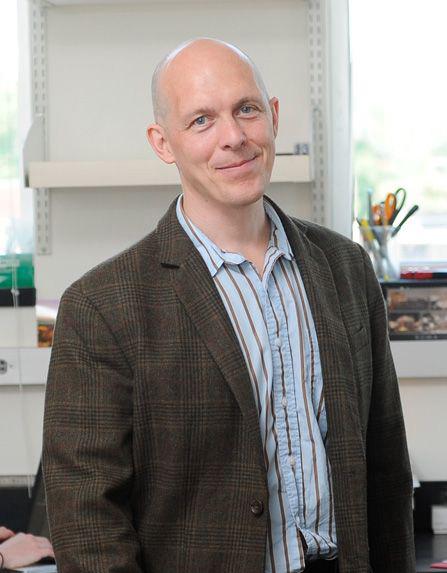
1. Haddad, Nick M. "Resurrection and resilience of the rarest butterflies." PLoS Biology 16, no. 2 (2018): e2003488.
2. https://www.firsttemples.com/ cabilla-residency
3. https://waltermagazine.com/community/ the-method-neighborhood-now-and-then/
4. https://ncseagrant.ncsu.edu/ ncseagrant_docs/products/2010s/rocky_ branch_projectsummary.pdf
5. https://www.carolinacountry.com/ departments/departments/feature-story/ living-with-beavers

6. The citizen science platform eBird currently notes around 120 bird species along this section of the creek (https://ebird. org/hotspot/L1303201; ebird hotspot).
7. This riot is new to many of NC State’s students. A student in a course taught by Brad Taylor, for instance, asked if the university had installed speakers in the forest that played frog sounds. There were no speakers, just the real frogs in the ponding created by the beavers.
8. And, rumor has it, may even have removed some beavers when restoring the creek. Alas.
9. von Haefen, Roger H., George Van Houtven, Alexandra Naumenko, Daniel R. Obenour, Jonathan W. Miller, Melissa A. Kenney, Michael D. Gerst, and Hillary Waters. "Estimating the benefits of stream water quality improvements in urbanizing watersheds: An ecological production function approach." Proceedings of the National Academy of Sciences 120, no. 18 (2023): e2120252120.
10. Rocky Branch Greenway Beaver Dam https://www.chronolog.io/site/MEA101
Figure 1. A sign at the University of Vermont recognizing both the value of the opportunity to watch beavers do their work and the reality that they, well, sometimes flood things. Equal Parts & Hole Parts | Approx. 140cm long | Beaver chewed Willow wood
Photo: Goodrest Studios | https://goodrest-studios.co.uk/
Equal Parts & Hole Parts | Approx. 140cm long | Beaver chewed Willow wood
Photo: Goodrest Studios | https://goodrest-studios.co.uk/

Maya Ronchetti is an artist based in the South West of England. The soul of her work resides within how humans relate to the story of place, people and nature. She is fascinated by the energy and life of organic matter and how the human spirit encounters such a complex and deeply resonant force. Her imagination is ignited by practises of ceremony and indigenous traditions whilst also investigates this tension politically through a variety of mediums. However, Maya is predominantly a wood carver and textile artist, often transforming materials found in British woodlands into organic forms and gentle wild colours
through natural dyeing, enjoying the art of flow and layering whether physical or theoretical.

Could you tell us about how you are inspired by nature?
For me, I think the most interesting, curious part of being inspired by ‘nature’ or what we perceive as natural is the space between the person and the seemingly natural thing. What I mean by this is what we resonate to and feel under the surface when encountering a natural force, animal, process or material. Deeper than what we ‘think’ about nature and more how we innately feel about it. I like to question how our bodies react to natural processes, seeing a predator catch prey, watching a river flow; I’m inspired by what we don’t realise or notice is happening during these moments. For me, this inbetween place, the space between human and nature is where the magic happens, and it is this space that is actually filled with chemical signals, muscle memory, instinct, healing and ancient knowing.
In general, I am facinated with ‘what lies beneath’. Whether that’s the unseen workings ofmycelium sharing nutrients between trees or instinctual habits of beavers creating more
Maya Ronchetti Photo: Goodrest Studios | https://goodrest-studios.co.uk/biodiversity in a woodland or the unseen bodily functions we humans undergo when touching wood, wool or soil.
This innate affiliation leans towards concepts such as biophilia, mindfulness and instinct - where inner connections occur or inner knowledge is stimulated even if we don’t notice them.
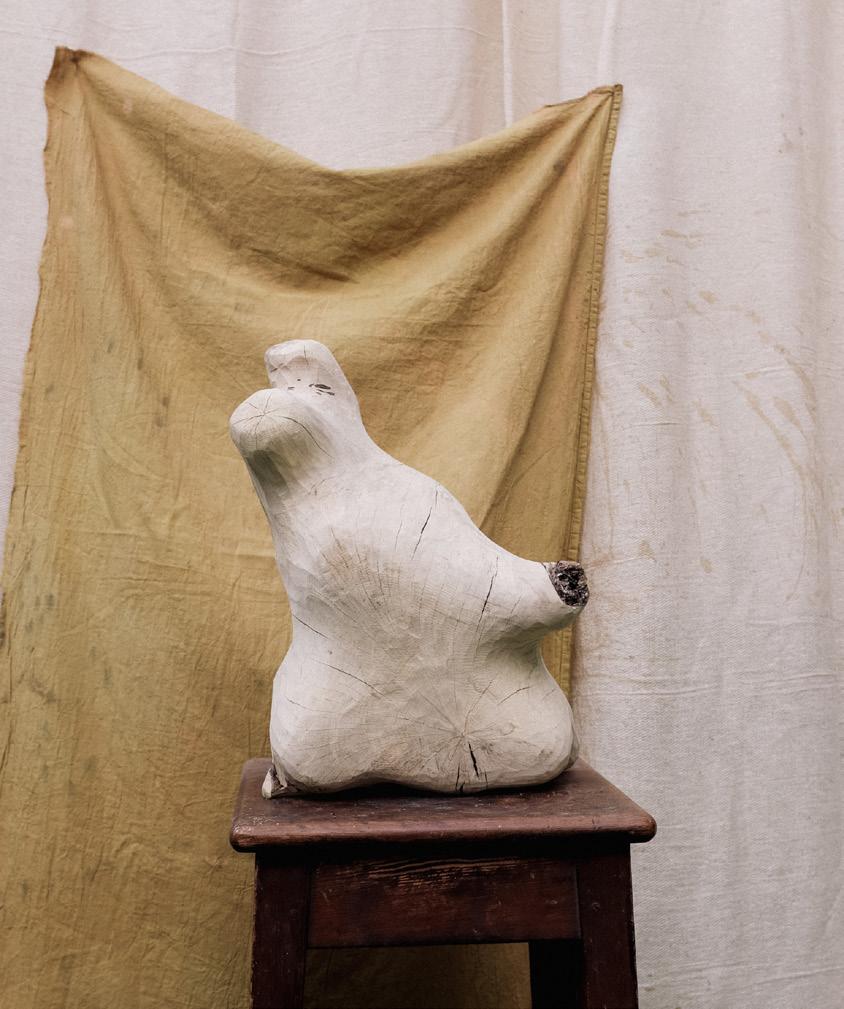
I think I am most stimulated in life and in art when on the move seeing new places and being immersed in new cultures. Whether that's leaving the comfort of my rural, coastal base in South West England to go to a gig in Newcastle, or travelling in South America. I love observing and learning of people’s motivations for making things and ways of life. I want to understand why cultures do things: is it practical, spiritual, tradition or sustainable? I’m interested in how people utilise natural materials and live alongside natural forces.
The presence of change and momentum whilst being immersed in a new land with new people, stories, foods, traditions, priorities, sounds, narratives and ideals is really fascinating. I feed on learning and love to absorb while being immersed in newness; my favourite pieces of work are
ones I’ve made after trips to vastly different landscapes and cultures. Natural processes like the drying out of leaves in autumn, desolate river beds scaring Bolivia, illusions of distant mountains as hovering islands when on a salt flat in the heat. The groans and collapsing of a glacier and hormonal changes of a pregnant woman are just some natural processes influencing my work at the moment. Throw these inspirations into a pot along with a sprinkle of indigenous wisdom, National Geographic YouTube channel, mushroom foraging, cultural politics, self reflection, psychology, wood, plants and going surfing and you get my work. The
Holy Flow | Organic Form | Sycamore Wood Photo: Goodrest Studios | https://goodrest-studios.co.uk/ Who/what inspires you relatively? What do you feed on the most?

sculptural beaver wood carvings you see displayed in this article is a project exploring some specific ideas and inspirations but does not define my overall practise.
What are you working on right now? Any exciting projects you can tell us about?
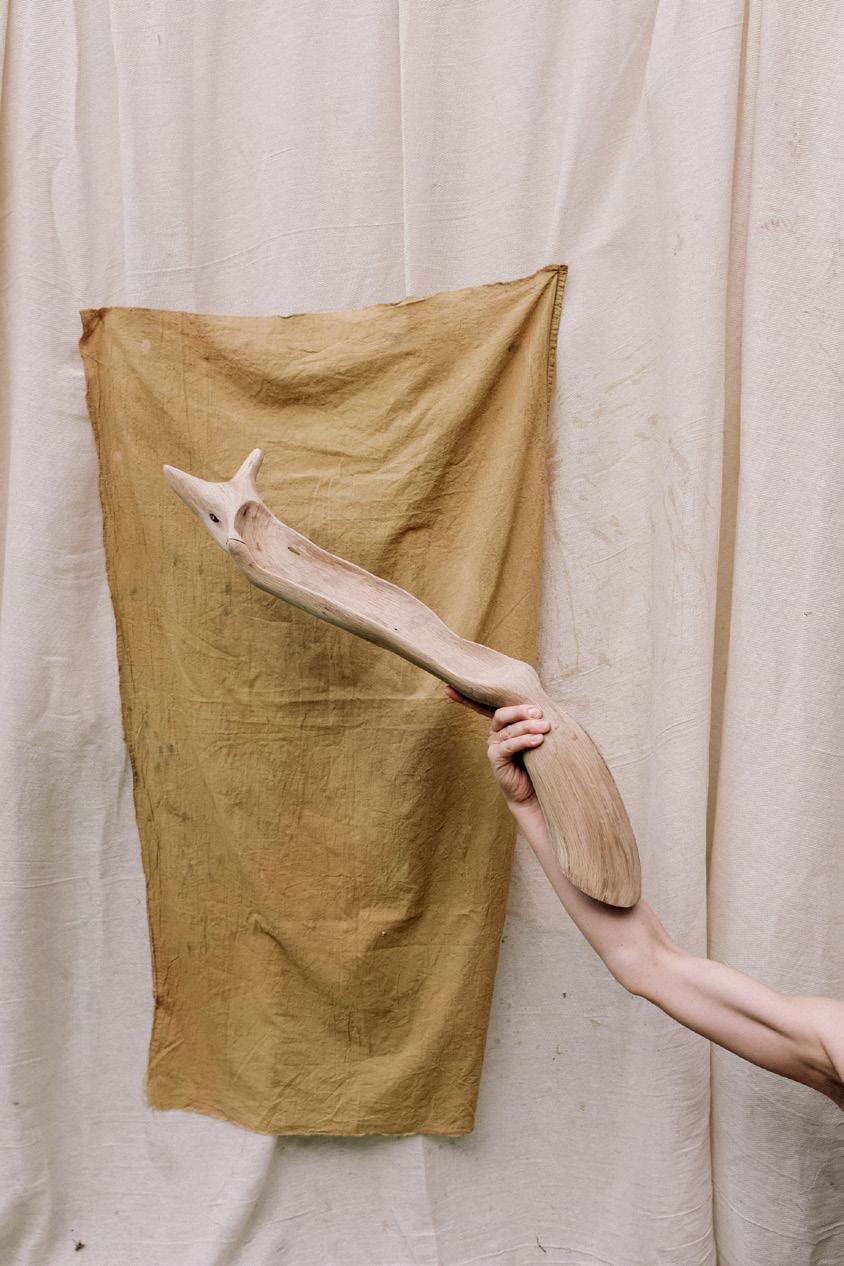
I’ve just returned from a 4 month trip to Argentina and Bolivia and feel very inspired to start making again. As a result
I’m starting to develop sculptural ideas in response to the landscapes I experienced there. But also to my bodily tensions and emotional progress through the trip. I’m exploring how texture and material can communicate a feeling or energy. To do this I’ve been doing meditative drawings of my body trying to map the sensations and feelings of different body parts in relation to how I responded to the different cultures and environments I was immersed within.
I’m also exploring ways of communicating the various perspectives on tourism and lasting effects of colonialism that I become aware of in South America. Responding to the complexities of culture and land relationships. But of course, I’m unsure of exactly how these influences will manifest into physical works.
What is the last book you enjoyed?
My long standing favourite book to date is Women That Run With Wolves by Clarissa Pinkola Estes. She explores a way of relating to nature through a decolonial perspective, using global folklore and fairytales to present a way of reading into nature and wildlife through symbolism and the essence of what that natural phenomena is rather than what it does. She teaches you to encounter nature and events as more than
Seed Pod: Allow | Cornish Holmoak Photo: Goodrest Studios | https://goodrest-studios.co.uk/their biological parts, and more about what they mean. I believe this is an extremely effective way of building a meaningful relationship to the natural world around you, when you learn how to entwine it into the meaning of your life and not see nature as a separate entity doing stuff that you are simply watching or looking at. I’ve also been fascinated by Lo-TEK Design by Radical Indigenism by Julia Watson which to me goes hand in hand with Women That Run With Wolves. Demonstrating examples of humans relating to nature and their environment less objectively, through an intelligence that's based on deep knowing and feeling. The incredible examples of integrated design in Lo-TEK expresses the potential of the nature that surrounds us, or more accurately; that we are a part of. It's an amazing read displaying how internal connections to surrounding habitats can intelligently influence the design of external life. Which is much like the life of the beaver who lives within, eats, breaths and improves the biodiversity and success of its habitat simply by living in it.
Obviously there is no such thing as perfect happiness but maybe living the life of a beaver is close to it!? My most recent project
was a 6 week residency making sculptures from wood that beavers had chewed on. During the project I hung out in trees at night watching the recently reintroduced British beavers happily living their lives in a woodland in North Cornwall, UK. I learnt a lot from the beavers and their way of life but most notable, their incredible instinct and intuition, connection and commitment to their habitat and biodiversity. Plus they spend their days swimming, wood carving,
 ‘Untitled’ | Naturally dyed tapestry using onion, seaweed, pomegranate, iron, copper, cabbage and avocado | Size: 150 x 150 cm
Photo: Goodrest Studios | https://goodrest-studios.co.uk/
‘Untitled’ | Naturally dyed tapestry using onion, seaweed, pomegranate, iron, copper, cabbage and avocado | Size: 150 x 150 cm
Photo: Goodrest Studios | https://goodrest-studios.co.uk/
Beaver chewed wood collection
Goodrest Studios | https://goodrest-studios.co.uk/ Page


Maya Ronchetti
playing and eating, which all sounds pretty perfect to me.
Beavers live a circular existence, everything they do each day from eating trees to building dams, correlates to supporting a healthy, diverse habitat for more species to thrive and improves their lives at the same time. It’s incredible, they eat trees which then fells the tree, then they drag the tree to the river or stream, build a dam with it, which creates a pool where they swim and are more protected from large predators as beavers are far more agile in the water. They dig out their lodges in the river bank next to the pool where it's safest, but they often have many lodges and dams at different points of the stream, drawing in more biodiversity, balance and opportunity for decomposition to occur and wetland habitat.
So, back to the original question, if I were to live intuitively, in direct positive relationship to my natural habit, building and eating from my surroundings sustainably, living among the other creatures in the forests and get to swim and carve all the time then that for me is pretty close to happiness. And I’m sure beavers are so intune with their life and environment that they don't need to seek and do all the wellbeing practises we humans do… however I’m not sure if beavers get to travel far or go dancing at the weekends… but maybe.
I have long thought about studying Anthropology but am always faced with a political and problematic block related to the subject, not to mention my lack of academic qualifications. But I think, if I was not an artist then I’d probably be a psychologist which leads me to think that maybe studying Art Psychotherapy is potentially on the cards. Combining my interest in people, place, stories and creativity and finding time to be creative myself would be amazing. But in a completely different life, being a National Geographic explorer would be an absolute dream, travelling, learning and experiencing incredible places and things and being paid for it would be an extremely fulfilling existence. Or again, maybe I’d be a beaver.
For more of Maya's work: https://www.firsttemples. com/ | Instagram: @first.temples | All photos: Goodrest Studios | https://goodrest-studios.co.uk/
We would appreciate your feedback on this article:
Approx. 120cm long

Beaver chewed Willow wood
submerged in wetland, pooled from health in the mud of mother earths hands, embraced by weather, skipped by dear, a dark wooded treasure, collecting was clear, close to well trodden tracks, an elegant seed to honour, gnarled stripping of bark, a texture to not bother, teeth to perfect reveal, a spirit seed no longer conceal, a birth of life in collaborative, natural ideal. a small seed pod, an elegant flow of texture, rough to touch exterior, with a smooth internal vessel. a symmetrical shape with no perfection at all, one nip from a beaver and a few nips of my tools.
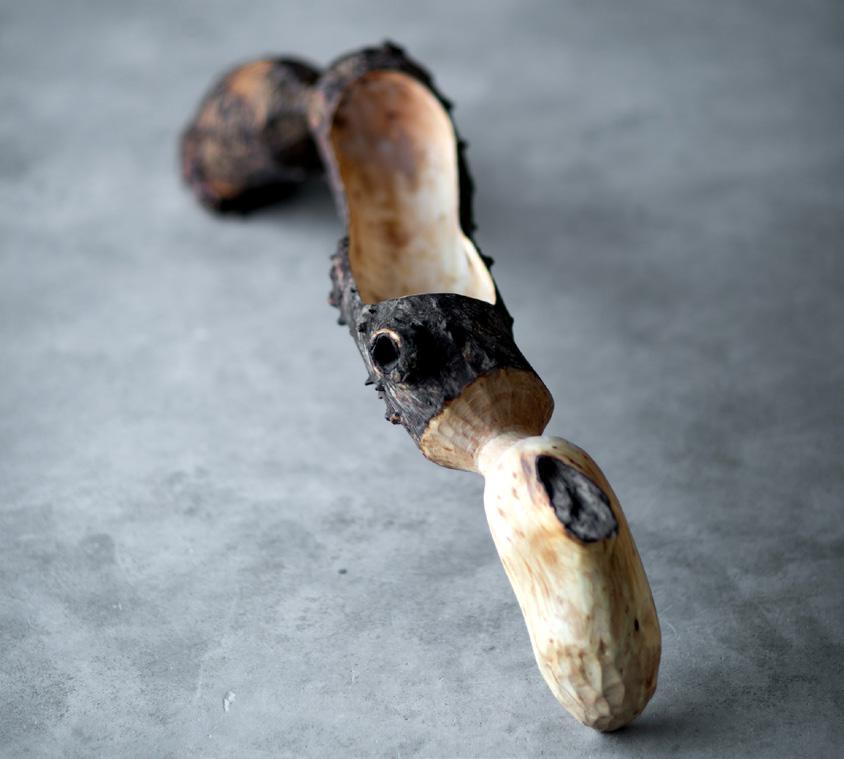
Approx. 140cm long
Beaver chewed Willow wood

sunken, almost like earthen, lost to the bog and joyous, chewed at both ends, release from suspension in a moment of dining, one night of filing, falling, lying not sleeping, coppicing and eager feeding, flesh sodden and pink, becoming a body of two parts, bulbous and bending, flowing and lending abundance of textures for feeling, a heavy hard length, a landscape of sense, to touch it is healing.
The only piece serendipitously chewed at both ends to be completely released from the body of the tree it stretched from. I found it lying in the bog beginning to coppice into new life and lend its bark to mycelial networks for future generations, now this beautiful sculpture.

Approx. 75cm tall
2 balancing pieces
Solid Beaver chewed English Oak

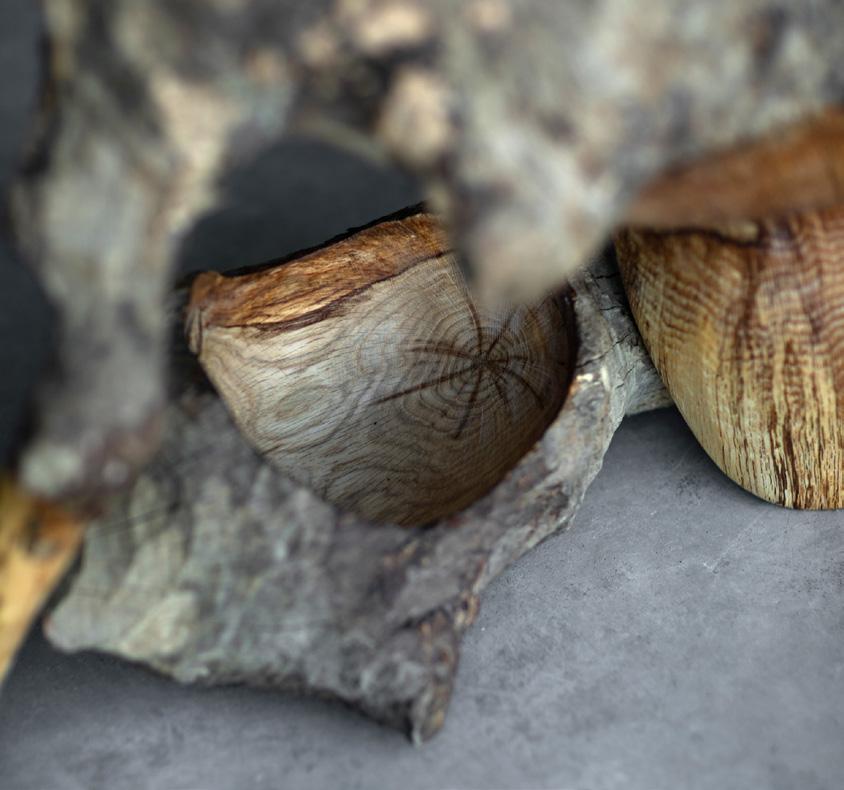
beasts of all beasts both eaten and birthed, no creature of meek could tackle such girth, ripped from oak limb, now sharded apart, steaming with teeth of both beings, with an enlivened spirit at heart. has beaver carved beaver? a self portrait to ward off unwanted visitors close to the doors of their home, a subconscious entrapment of a spirit in the woods, roaring in pain or ripped from a kiss. this piece has an enchantment and shapeshifting quality carried in the wood and its form. it has become so many creatures in so many different moments through so many eyes. a majestic being protecting its oak kit below. a very rare object indeed, made from the wood at the heart of Celtic folklore, myth and magic. the great oak, the emblem of truth, courage, wisdom and strength. the creatures body defined by a huge area and shape created by the beavers and a lower body exposed and carved to a smooth finish by human touch to reveal an array of beautiful old markings of time.

 Brígida Baltar (1959–2022): Fog Harvesting | Coleta de Neblina
Brígida Baltar (1959–2022): Fog Harvesting | Coleta de Neblina
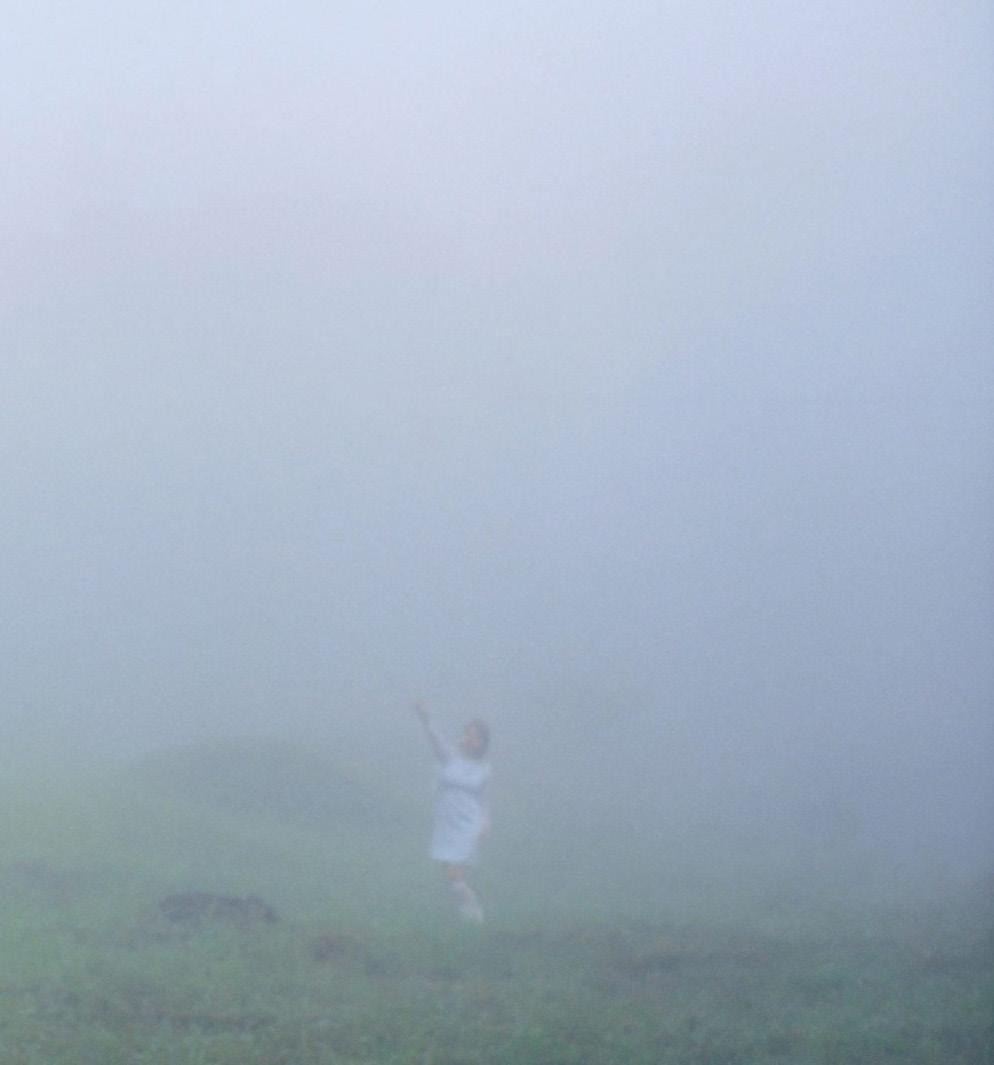
Who will hold it?
Water flirts with a stone. The stone will always remain happy. Water runs in the river and this river falls into the sea. The sea holds the world. And the world holds the sea once again. Both hold humans, but will humans be able to hold on?
- Yanin Kaiabi1The connection between who we are, where we live, and our cultural dimension establishes our identity. We are beings that correlate in multiple dimensions, whether physical or metaphysical. In this sense, human belonging evokes its multiple existential layers. Fire, air, water, and earth constitute us as material and immaterial substances. Through ancestral Latin American traditions, these elements lead to a series of cultural manifestations. In Amazonian cosmogonies, for example, water has its greatest expression. Life and the origin of all things emerge from water. According to the Tukano people who have lived in the upper Negro River region (Amazon) for over 800 years, humanity originated from a Snake Canoe that navigated through the milk lake until it reached the South American region. In a great journey, the canoe passed through various malocas (traditional houses), and with each encounter, a transformation occurred,
generating human bodies with immense cultural and ethnic diversity. Thus, our humanity emerged.
Over time, modernity has distanced us and paved the way for other values in our humanity and the Neotropical biogeographic region (Latin America), which celebrated the unique and diverse expressions of life. Through the universal presence of water, we come together. Our identity is biodiverse, and water is the attribute of all living beings. By recognizing our deep connection with water and the wisdom of our ancestors, we can restore our relationship with the natural world and promote a more sustainable future. In doing so, we honor the intrinsic value of all life and embrace a harmonious coexistence with the environment. Returning to our essence and reconnecting with our roots brings us a sense of belonging and a vision for the future.
In this quest, we discover the profound potential for regenerative and sustainable innovation, bridging the gap between forgotten knowledge and contemporary society's pursuit of a harmonious coexistence with nature. It is through the convergence of "poiésis" (creative production) and ancestral wisdom that we can pave the way for a future where life, and consequently water, is valued, protected,
1. Livro das águas (pagina 108), Índios do Xingú, Instituo Socio Ambientaland respected. For this reason, just like the snake canoe, we pass through the various "poiésis" of symbolic representations of water in the Neotropical context. It becomes a transformative path, a return to ethnic and aesthetic encounters that represent our interpretation of new ways of conceiving life. On our journey, our snake canoe
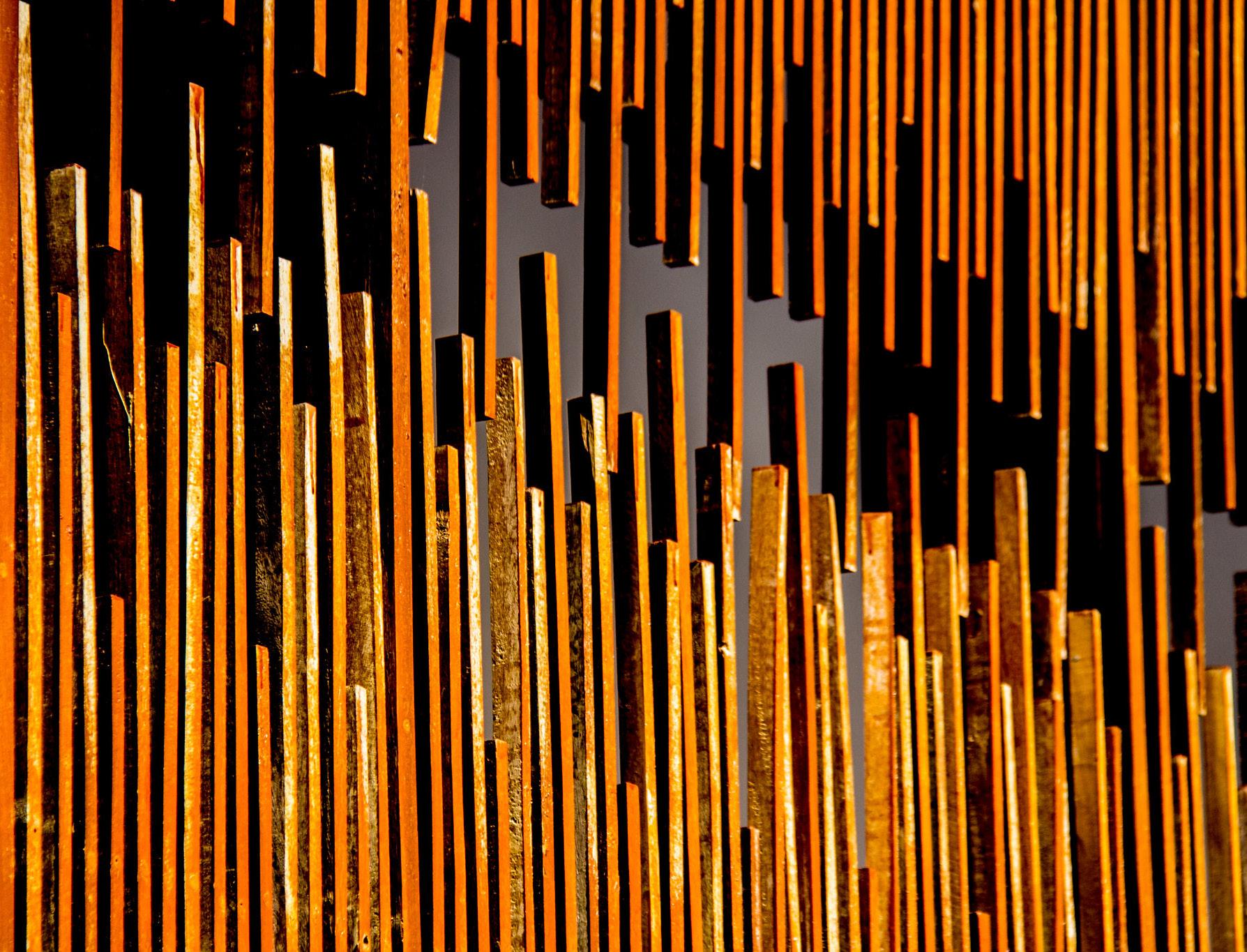
navigates through the buried currents of urban rivers in contemporary times.
"What matters to say is that the predatory model of development, producing disasters, has made us reopen our eyes to the sweet mystery of waters. And now they lead us to rethink the meaning and form of humanity's urban adventure." - Antonio Risério.
Maloca Photo: Júlio Minasi, 2016 | Universidade de Brasília | Flickr ccCurated by NOUS Ecossistema
Fog Harvesting | Coleta de Neblina
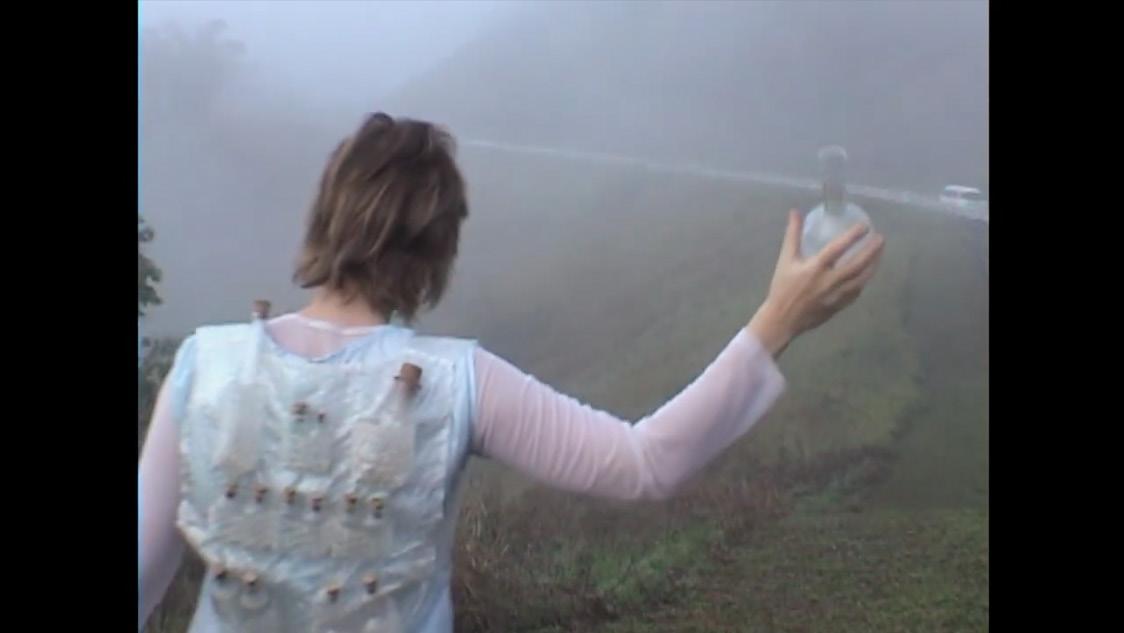
This is an artwork that explores the intangible and elusive nature of mist, symbolizing the transient and mysterious aspects of life. Through metaphorical representation, Baltar challenges our perceptions and prompts contemplation of the limitations of human understanding. The artwork invites viewers to reflect on their connection with the ephemeral and contemplate the beauty found in the impermanent aspects of existence.
brígida Baltar (1959–2022): to make the world a shelter | nara roesler new york https://www.youtube.com/watch?v=wVoNYVmLgoI&pp=ygUVYnJpZ2lkYSBiYWx0YXIgY29sZXRh


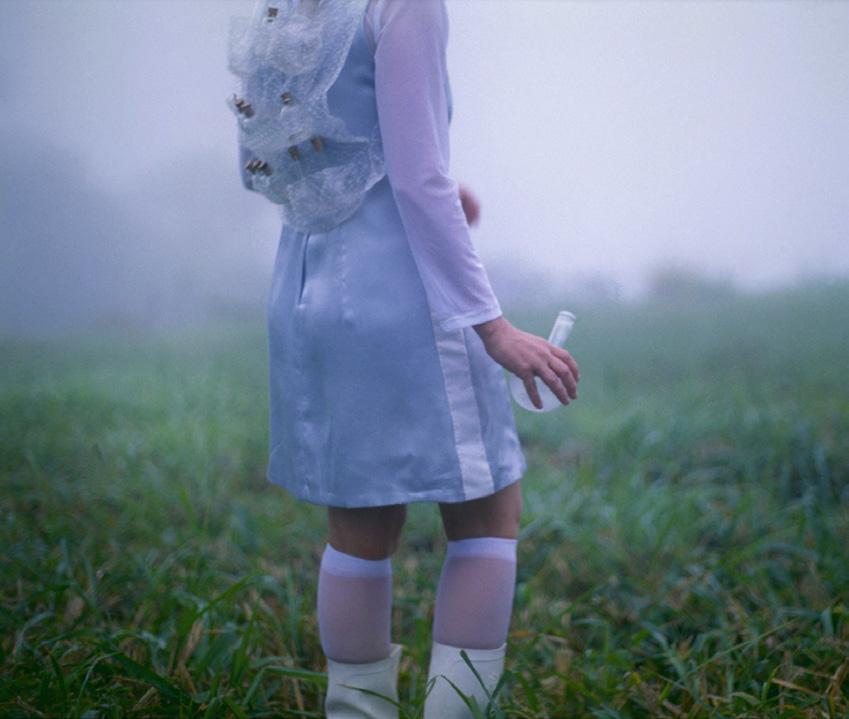
The Rios DesCobertos project is an exhibition that invites visitors to explore the hydrographic basins of the rivers in São Paulo. With an interactive model and mapped projections, it provides historical, socio-political, and environmental information about the rivers. The objective is to reclaim the emotional connection and promote a new perception of urban waters, using art, design, and technology as educational tools. The exhibition offers an immersive experience and aims to foster a new relationship between the public and the city. After being held in São Paulo, the project traveled to other cities, showcasing models, and addressing the complexity of the relationships between the hydrographic basins. The exhibition was attended by approximately 70,000 people from different age groups and sectors of society. Its development involved multidisciplinary participation from professionals and related existing projects, such as Rios e Ruas, which has been mapping the "buried" rivers of São Paulo for over 10 years.
More: https://www.estudiolaborg.com.br/ lab/rios_descobertos/

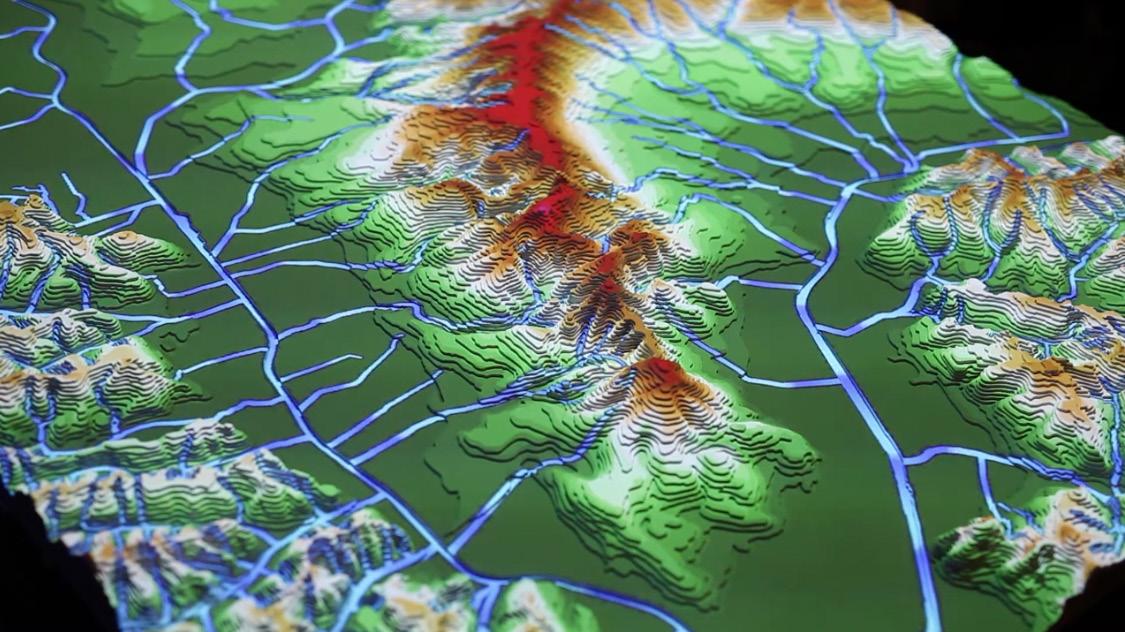
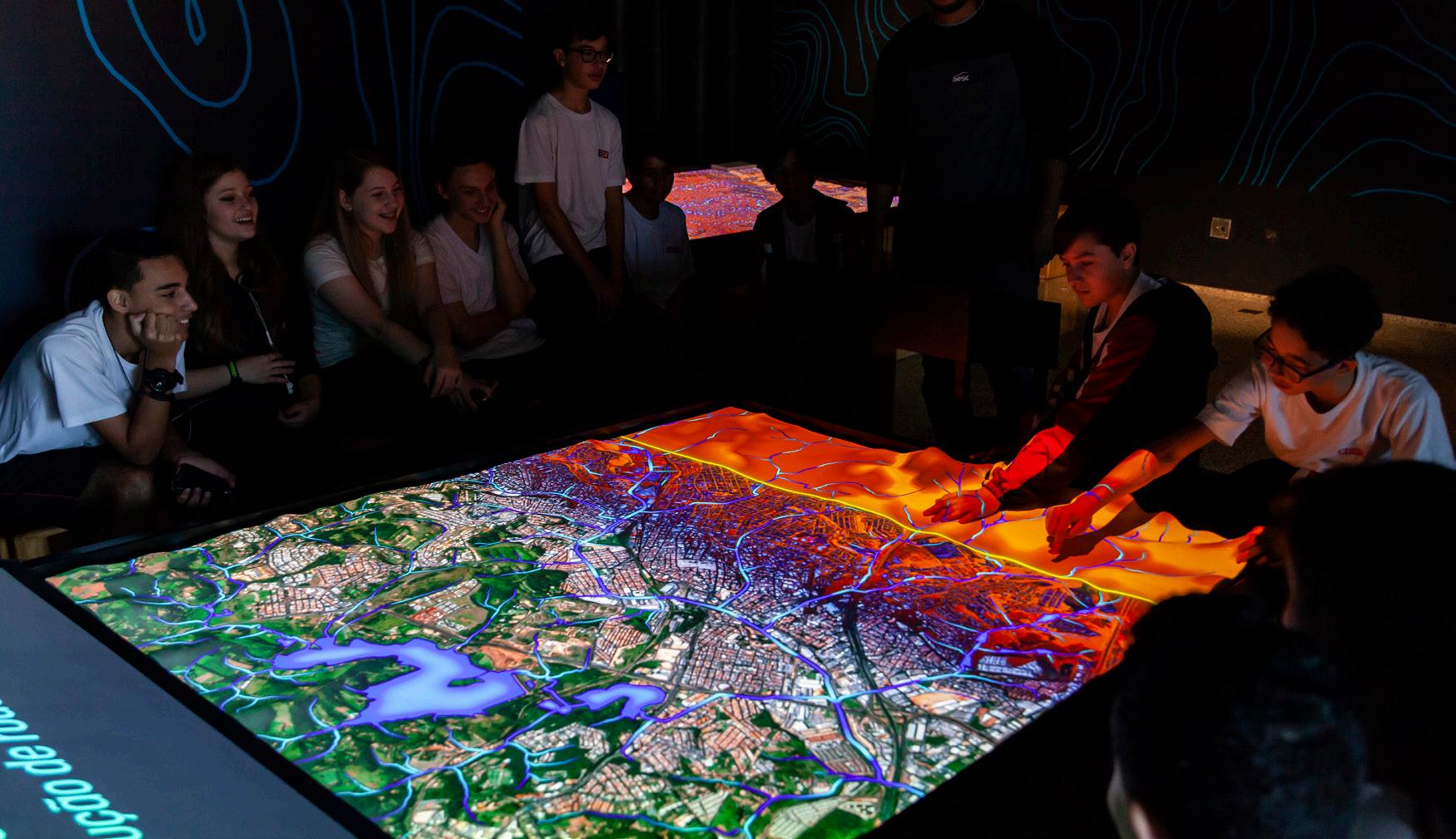






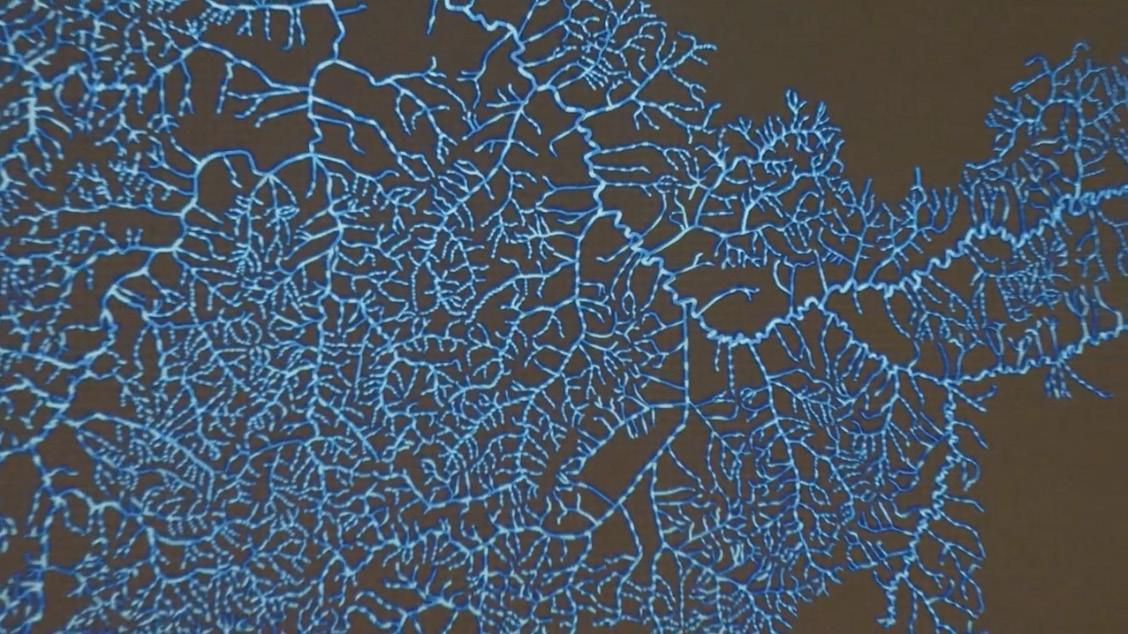
Rios DesCobertos - Arte, Cultura e educação
https://www.youtube.com/watch?v=Jc1nBhZJI8k



We would appreciate your feedback on this article:


 Green Dung Beetle (Gymnopleurus virens) shaping a ball of elephant dung Pilanesberg National Park, North West Province, South Africa
Green Dung Beetle (Gymnopleurus virens) shaping a ball of elephant dung Pilanesberg National Park, North West Province, South Africa

Last December the New York auction house Sotheby’s held its Magnificent Jewels sale. To commemorate the 100-year anniversary of the discovery of King Tutankhamen’s tomb, a portion of the sale featured a selection of vintage Egyptian-revival jewelry. Judging by the value of the items, which were priced at several hundred thousand dollars and up, Egyptomania—the craze for the culture and exotic motifs of ancient Egypt—remains alive and well.
Egyptomania was first triggered by Napoleon’s invasion of Egypt at the turn of the 19th century and then reignited in successive waves in Europe and the U.S. with the opening of the Suez Canal in 1869 and the uncovering of King Tutankhamen’s grave in 1922. It took the design world by storm. Perhaps the most famous example is the classic form of the Washington Monument, which was inspired by the Egyptian obelisk to evoke a sense of timelessness.
Egyptomania, however, often sounded a more exuberant tone in the decorative arts and jewelry. As the Sotheby’s auction catalogue demonstrates, some of the eras’ finest designers and houses—from Louis Comfort
Tiffany and Castellani to Boucheron— eagerly embraced it. Mimicking the ancient civilization’s elaborate designs in brooches, bracelets, earrings and necklaces, the jewelers often rendered their creations in

Scarab beetles were one of the most common material objects made by the ancient Egyptians. These scarabs, from the Middle Kingdom, were likely used as jewelry, specifically amulets. The scarab beetle is symbolic of Khepri, the Egyptian sun deity, 1910.
Zygote Quarterly 33 | vol 1 | 2023 | ISSN 1927-8314 | Pg 73 of 116
 Photo: The Met | Wikimedia Commons
Photo: The Met | Wikimedia Commons
Relief panel showing two baboons offering the wedjat eye to the sun god Khepri, who holds the Underworld sign. | Limestone| Late Period–Ptolemaic Period, 400–200 BCE | Wikimedia Commons



Adelheid
Fischerprimary colors of red, green, yellow and blue so shamelessly daring and bright they could have inspired the palette of a kid’s Crayola box. They kicked things up a notch by setting particolored gems such as lapis lazuli, carnelian, turquoise, rubies, sapphires and emeralds in chunky gold settings and intricate mosaics. It was jewelry with a pileit-on, no-apologies attitude. And I coveted every piece!
But it’s not just the design lover in me who appreciates Egyptian-revival arts and
crafts. As a nature afficionado, I am tantalized by the back story of one of the style’s most ubiquitous icons: the scarab beetle. Ancient Egyptians were inordinately fond of beetles, as were the Western artists who later copped their style. Indeed, beetles dominate the iconography of the Sotheby’s jewelry selection, their hunched forms, like miniature VW bugs, strung as beads in sumptuous necklaces or carved into stone as pendants and showy brooches that depict the insect in flight with outstretched wings.
Popeye Dung Beetle (Pachylomera femoralis) on wildebeest dung Western Shores, iSimangaliso Wetland Park, KwaZulu-Natal, South Africa Photo: Bernard Dupont, 2023 | Flickr ccBut these are no ordinary beetles. Scholars point out that as early as 2700 BCE ancient Egyptians had developed a complex religious mythology in which scarabs, in the form of a god known as Khepri, played a leading role. Khepri was a manifestation of the sun deity Ra, chief of the gods, who was responsible for steering the sun across the sky in cycles of light and darkness. Khepri was universally revered. Amulets in the shape of beetles were worn around the neck, strung on gold chains by the rich or fastened
to rope by the less affluent. These effigies were so common, observes cultural entomologist Yves Cambefort, that “hundreds of thousands of these tiny figures have been found in the Egyptian soil.”
And in the graves of royalty. Among the most prominent of the many scarabs found in King Tut’s tomb, for example, was a heart scarab. Made of black resin, it was placed near boy-king’s navel. Experts say that it signified Ra’s creative power which Egyptians believed could restore the hearts
 Green Dung Beetle (Gymnopleurus virens) on elephant dung Pilanesberg National Park, North West Province, South Africa
Photo: Bernard Dupont, 2023 | Flickr cc
Green Dung Beetle (Gymnopleurus virens) on elephant dung Pilanesberg National Park, North West Province, South Africa
Photo: Bernard Dupont, 2023 | Flickr cc
Page 78 of 116
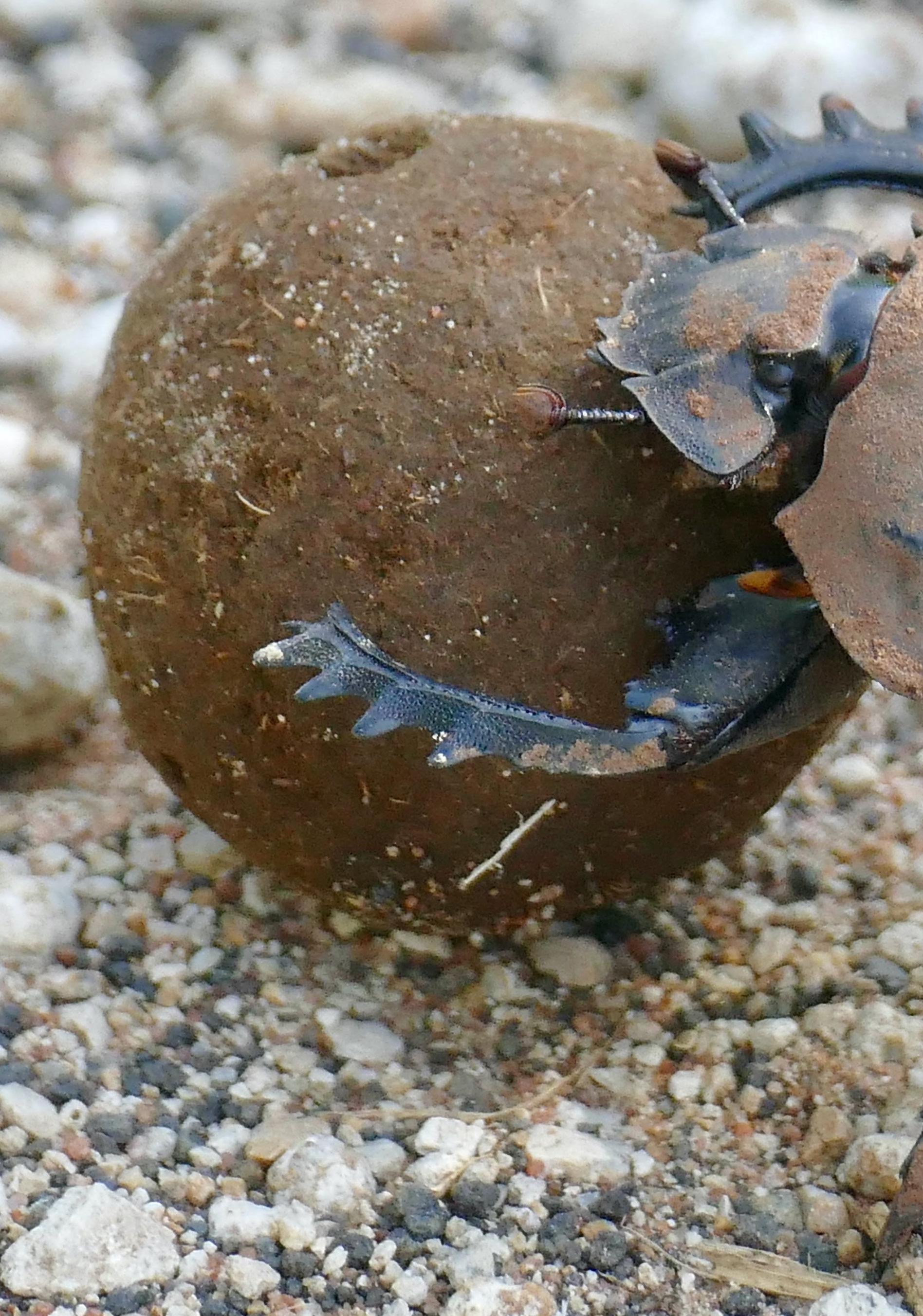 Popeye Dung Beetle (Pachylomera femoralis) and its pill
S58 Road East of Punda Maria, Kruger NP, Limpopo, South Africa
Photo: Bernard Dupont, 2023 | Flickr cc
Popeye Dung Beetle (Pachylomera femoralis) and its pill
S58 Road East of Punda Maria, Kruger NP, Limpopo, South Africa
Photo: Bernard Dupont, 2023 | Flickr cc

Adelheid
Fischerof the dead and reincarnate them as living creatures just as it resurrected the sun each morning.
I can imagine ladies at high-society dinners in Europe and the U.S. reciting such royal provenance and exotic mythology as sacred scarabs gleamed in the candlelight from dangly earrings and gem-encrusted necklaces. I can’t help but wonder, however, how many of them knew the beetles’ full Cinderella story, that it was an insect with a dual identity: part god and part janitor. Surely unbeknownst to many of
them (drumroll, please), sacred scarabs are members of the dung beetle family or, as they are referred to by some of their American folkloric names, turd tumblers and shit eaters.
Westerners undoubtedly would have recoiled at the thought of awarding a dung beetle such a prominent place in their divine pantheon. But not so the ancient Egyptians. Although they got some of the natural history details wrong, Egyptians conflated one of the world’s lowliest jobs—moving stinky piles of waste—with the movement of the sun, the very action that makes life possible on earth. Here’s how. Attracted by the aroma of freshly deposited excrement, dung beetles fly into piles of animal waste, carving off small chunks and shaping them into neat spheres. Using their hind legs, the insects quickly roll the balls away and bury them. In this underground nursery, the female lays an egg, leaving her offspring to be provisioned by the contents of the dung until the larva undergoes metamorphosis and later emerges as an adult to start the process all over again. In time, a cult developed, writes entomologist Brett Ratcliffe, “whereby Ra was symbolized by the scarab, and the sun was represented by the dung ball. The scarab pushing its ball was an earthly manifestation of Ra escorting the sun on its daily journey across the sky. The
Nun, god of the waters of chaos, lifts the barque of the sun god Ra (represented

the sky at the beginning of time.
Artwork from the Book of the Dead of Anhai, created c. 1050 BCE | Wikimedia Commons
by both the scarab and the sun disk) intosetting of the sun was also presumably correlated with burial of the dung ball in the earth by the scarab.”
We now know, of course, that the movement of the sun does not depend on gods, either in the sky or under the earth. But, in a very real and important sense, dung beetles and their janitorial kin do in fact make the world go round. Witness the disaster that followed the introduction of cattle into Australia in the 19th century. The country’s more than 350 species of native dung beetles, which were adapted to dry marsupial dung, ignored the wet patties of ruminant animals. Without the help of their sanitation services, domestic animal waste began to pile up, leading to a fly pestilence of biblical proportions and the burial of millions of acres of valuable grazing land under the accumulating excrement. The problem was only brought under control after the launch of a nationwide campaign to import cattle-poo-adapted dung beetle species from other countries.
The catalogue of benefits from these tiny turd tumblers continues to this day. Biomedical researchers, for example, have identified compounds from dung beetles that show promise as anticancer and antimicrobial agents. Just as astounding is the recent discovery that some species of nocturnal dung-rolling beetles use the Milky
Way as a celestial compass for traversing the landscape. Entomologist Marcus Byrne notes that mimicking this strategy could result in new navigational systems for autonomous drones or Global Positioning Systems that can function independently of satellites. And then there’s the potential inspiration for materials scientists in search of new slick surfaces. Although dung beetles routinely dive into piles of gummy doo, they emerge with their surfaces as shiny as a Cadillac from a carwash. “Nothing sticks to a dung beetle,” exclaims Byrne in his book Dance of the Dung Beetles.
From turd tumbling to precision wayfinding, the lowly dung beetle has earned its pride of place in the pantheon of the gods, performing earthly tasks that are every bit as miraculous, inspiring—and necessary— as conjuring the rising sun every morning. ⊗
We would appreciate your feedback on this article:


Following publication of the review of Dicks’ The Biomimicry Revolution in ZQ32 (https://issuu.com/ eggermont/docs/zq_issue_32/94), Randall Anway and Henry Dicks continued the discussion on broader biomimicry issues and summarized their reflections.
It has been over 25 years since Janine Benyus set out to present the “biomimicry revolution” that she thought would resolve the ecological problems induced by the “industrial revolution.” But, despite growing interest in biomimicry and related topics, nature-inspired innovation still appears as somewhat marginal and unorthodox and the general idea of “learning from nature” is not yet seen as a central component of the green transition. As the ecological crisis worsens, biomimicry’s potential remains unfulfilled – to the detriment of us all. To my mind, the problem is largely a result of biomimicry being understood in a way that is both too narrow and too shallow. In what follows, I set out a few ways this problem might be overcome.
There are many fields of research and innovation that at some level involve “learning from nature.” But this is not always recognized. My favourite example is ChatGPT, which, as the Chatbot itself explains, is
inspired by the structure and function of the human brain – though this is rarely discussed in the media. There are also many fields that do not advertise themselves as biomimetic or bioinspired, but which either include imitating or learning from nature as an explicit principle or could very plausibly be interpreted as operating in that way. Examples include: agroecology, analog forestry, the bio-based economy, the circular economy, ecological engineering, evolutionary computing, industrial ecology, permaculture, and regenerative agriculture. Likewise, there are many other fields in which learning from nature may not be universal but is very widespread, including AI, green chemistry, and robotics. The biomimicry revolution could gain greater traction and attention if the dots were joined and all of these came to be seen to be linked by a common principle: “learning from nature.”
There are many partly competing terms in use: biomimicry, biomimetics, bioinspiration, bionics, not to mention the many other fields cited above that do not explicitly identify with any of these. While it is important to acknowledge and scrutinize differences between these approaches, it
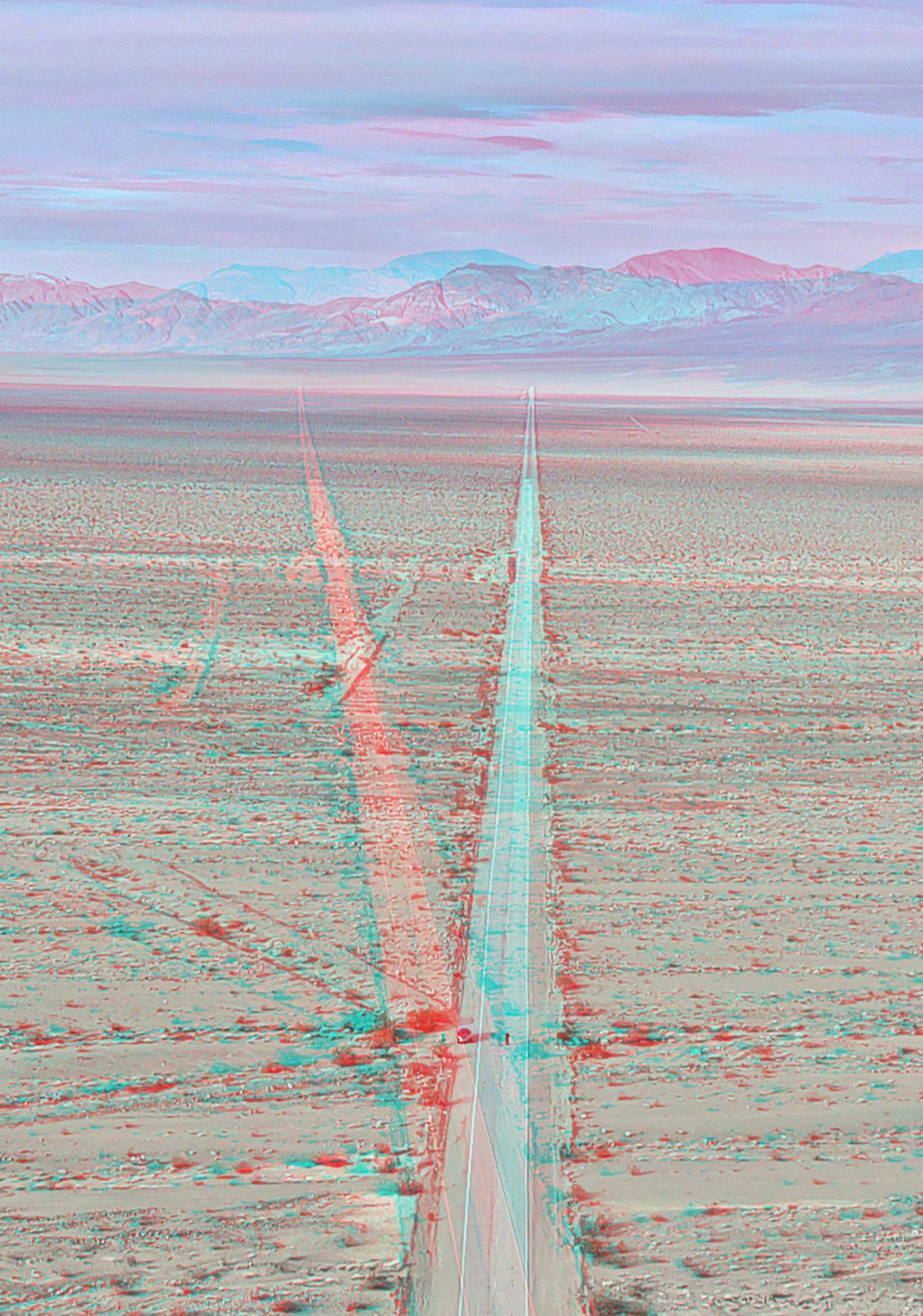
is also important to recognize what they have in common and to see them all as part of something larger. Norbert Hoeller et al. (2016) have suggested that we employ “biom*” as an umbrella term covering all these approaches. But while a potentially very useful suggestion for those in the know, it has the disadvantage of being even less
transparent to those not in the know than the terms it seeks to replace. An alternative possibility, and one which can unite without jargon, is to focus on “learning from nature” – an approach which also has the advantage of expanding the scope of biomimicry beyond narrow technoscientific applications to include both indigenous

perspectives (including traditional ecological knowledge) and ethical, social, and political developments.

There can be no doubt that Benyus has made a huge contribution to the biomimicry movement. She has played a major role
in popularizing biomimicry, both through her publications and the organizations she has set up (The Biomimicry Institute, Biomimicry 3.8, AskNature). She has been highly successful in drawing attention to the potential of learning from nature to help overcome the ecological crisis. And in the form of three succinct principles
– nature as model, nature as measure, and nature as mentor – she has given biomimicry a broad and powerful conceptual basis that is lacking from biomimetics, bioinspiration, and bionics. Nevertheless, the way the biomimicry movement has developed around Benyus may in some respects also have held it back. In trying to develop and communicate a clear consensus regarding what biomimicry is and is not, as well as how it is to be practised (life’s principles, etc.), the movement has been successful in carving out a comfortable niche for itself, but in doing so it has restricted its scope. To use a biological analogy, biomimicry today reminds me of a specialist species, unable to thrive in the more diverse environments that generalists can successfully exploit. If biomimicry is to be truly revolutionary, it must learn to feed on a wider variety of diets (theories, practices, concepts, etc.) and survive in a wider variety of habitats (disciplines, institutions, geographies, etc.).
Biomimicry and related approaches are practically oriented. When more theoretical perspectives are adopted, it is usually with a view to methodological innovation or refinement. What is still lacking are broader critical perspectives that apprehend
biomimicry as an object of study that may be investigated in relation to – or from the perspective of – such fields as philosophy, history, anthropology, critical theory, development studies, science and technology studies, cultural studies, and innovation policy. In short, biomimicry needs to be taken up as itself an object of study, rather than seen as something that must simply be practised using an appropriate methodology. In this way, we may also be better placed to understand its scope, its potential, its limitations, its obstacles, and so on, as well as how it may relate to and be articulated with other disciplines, approaches, or concepts. Further, in opening up multiple different perspectives on biomimicry, these critical perspectives may also enable biomimicry to diversify out of its current niche and to speak to a wider audience. To some extent, all of this is already happening, but very few people are working on this and biomimicry has not yet received much sustained attention from, or made a lasting impression on, these other disciplines. Mainstream philosophers working on epistemology (the study of knowledge), for example, have yet to pick up on the idea of “learning from nature” as an important epistemological topic – and yet it may well be key to responding appropriately to the ecological crisis. Perhaps if professional epistemologists were to start
taking the idea of “learning from nature” seriously, the profound shift in beliefs and values biomimicry involves could be more readily appreciated.

While a somewhat narrower point, it is interesting to note that biomimicry has tended to focus on the imitation of certain seemingly objective traits, such as forms, materials, processes, and functions, at the expense of aesthetic or subjective traits, including colour, texture, sound, smell, and taste. This is understandable given the centrality of function to biomimetic innovation. The problem, however, is that aesthetic qualities have a functional aspect to the extent that whether they satisfy human users often depends to a large extent on their aesthetic qualities. For example, if either artificial meat or plant-based-meatalternatives (PBMAs) – both of which could play a major role in the green transition – are to catch on, then this could depend to a large extent on our ability to develop products that mimic the taste, smell, colour, and texture of natural meat. Not only have these aesthetic considerations been undertheorized, they have also been implicitly excluded by the focus on imitating nature’s objective properties. In seeking to distance itself from the traditional idea of art as
imitation of nature, where imitation is seen as aesthetic representation, biomimicry has forgotten that nature-inspired innovation could make the world not just much more sustainable, but also much more beautiful. Further, in cutting itself off from aesthetics, biomimicry has also cut itself off from related movements in the arts, like bio-art and ecological art, which it shares much more in common with than is currently appreciated.
Nature runs on sunlight
Nature uses only the energy it needs
Nature fits form to function
Nature recycles everything
Nature rewards cooperation

Nature banks on diversity
Nature demands local expertise
Nature curbs excesses from within
Nature taps the power of limits
Janine Benyus (1997). Biomimicry: Innovation inspired by nature
A lot of press on biomimicry has been invested in promoting inventive achievements and the idea that biomimetic technology and design 'solve problems' that
involve some enterprising concern, similar to the way 'artificial intelligence' is now being promoted to spur creative production apparently held back by slow thinking.
Yes, technology arises and we can marvel, but biomimicry is more than a neat trick for inventive thinking. There's human history behind the memes, history that created conditions where it could come about. I'm not talking about Janine Benyus' personal journey - that would be biography. I'm talking about the history of ideas - spoken, written, made, and discovered on land and in the oceans.
Some of these ideas we call science, and others philosophy. There are lingering perceptions that biomimicry is a rocky road for design: it can be costly and resource
intensive. I'd suggest that it's not the only path biomimicry may choose to take. The scientific-philosophical road can also be rocky; everyone's in it together and exploring the relations between us could resolve some tensions. In this short article, I can only begin to address the depth and breadth of this topic and touch on some things a philosophy of biomimicry (or biomimetic philosophy) could potentially do to help make more robust what Benyus and others have been nudging along.
How does nature gain our attention? It both feeds, clothes, shelters us, and creates the context in which those needs arise in our awareness. But once we have those

basic needs met, our minds wander and we forget all that nature provides until something disrupts that blissful state. There is great mystery in the gap between where we physically find ourselves moment to moment - in conscious awareness - and where our minds take us.
That virtually any person who has encountered an animal - even a pet - could notice similarities and differences between human and animal 'minds' (whatever a mind is) suggests that there's still undiscovered value in paying attention to other minds. Noticing and explaining such comparisons is one thing, making them useful and meaningful in 'modern' life is another. How could philosophy and physical-biological science both benefit from
considering what may be regarded as latent partnerships in learning?
There is such variety in the world around us, and yet we can perceive persistent patterns over the course of our lifetimes and recorded history. Everything is in motion, and everywhere we can discover and learn from resemblances and differences. As we attune and attend to the processes and flows of existence, we make distinctions. We categorize and discover affinities and persistent distances between people and things. We discover 'we', 'us', 'them', 'these', 'here', 'there' and so on.
In this world of seemingly infinite variation, how does nature stick together or move apart? In thinking about design particularly, we in the global west often end up simplistically fixating on things in themselves - familiar concepts, objects, and mechanisms - rather than the buzzing ecological relations in the living world and processes of change going on around us.
If we are capable of learning, we need not - perhaps best not - let our symbol systems dictate our every decision. Our shorthands only serve so far, and sometimes it's essential that we open ourselves to experience. With a little faith, we can discover richness after richness that
enhances the diversity we experience. It makes sense that the most authentic human use for biomimicry is through an appreciation of complexity and diversity at play in the range of terrestrial experiences. How can a philosophy of biomimicry facilitate diverse learning and flourishing of humans individually and together?
Biomimicry isn't so much about succeeding in technical problem solving as reframing 'success' (in design or otherwise) as becoming better attuned to the cycles of life on our changing planet. I think this is what Dicks' implies in The Biomimicry Revolution: if "biomimetic science allows us to glimpse what a truly sustainable long-term human habitation of the earth might involve" and if we are capable of “learn[ing] to dwell,” then "the concrete details of … our future dwelling might unfold.” (see pp 248-249).
From the perspective of the design of cultural artifacts, industrial processes, and artificial systems, Benyus' nine observations and Dicks' philosophy of biomimicry are more directional than instructive; they only suggest possible directions for exploration in an almost unimaginably huge landscape of possibilities and are silent on the means of achieving these in practice. Together with this notion of learning to dwell
- self-domestication - it may be possible to access an even deeper wisdom. If learning from nature helps give form to our future home, we must navigate a counterfactual situation: no matter how much an imagined future technical capability may be desired or 'required', it is not present. Even if some novel technology exists, re-imagining personal and social dimensions of that technology are part of the active construction of lived reality. These aspects of experience thoroughly complement each other, but the enabling roles of nature are discounted and largely ignored. Biomimetic innovation can be more than removing technical barriers to 'sustainability'; it can tap into the joy and fullness of human experience, expression, and adaptation - dimensions of active curiosity, wonder,
and other embodied, extended, embedded, and enacted experiences.
As a practice, a philosophy of biomimicry could create a context for building trust and co-operation between more-than-human beings. When I say more-than-human, I'm referring to the unity of our biological world. Human beings are one of many current outcomes of microbial construction projects taking place over eons. If our 'minds' are ready, how can a philosophy of biomimicry help us address the vibrancy of experience on earth as it emerges? Could such a philosophy create space for attributing plurality, so its variety, organization, and beauty can shine through and become sensible to diverse peoples? What then?

Biomimicry proposes apprenticing to our biological kin. Can philosophy help build conceptual bridges toward reconfiguring the details of our present (and future) dwelling? These are difficult questions in a world that effectively tells us 'don't look up' and 'don't look down', exploits 'what works' in a place until it's exhausted, then moves on. If we allow ourselves to become 'model-bound' we only hold ourselves back. Through practices of discovering affinity, building trust, and gathered experience, what worlds could be? Maybe there's a benefit to slowing down enough to make meaning of this before trying to speed up.
There is a growing sense that we're near the end of one kind of paradigm and near the beginning of another. In developing forms of biomimetic design practice, is there space to trace that out and consider not only the emergence of useful and novel technology but also how the pragmatics and aesthetics of knowledge, reality, and value come into being, change, and evolve over time?
To bring this full circle, too often we let abstractions saturate our attention. The power of contemporary science and communication and information technologies has begun to open up surprising new fields of knowledge and skill - new insights and new problem solving capabilities. But science
can only take us so far. Beyond science are questions of philosophy: what do we believe we know, regard as real, signify as valuable, and how do we address ourselves to the animate world and strive to dwell within it?
Modern life creates the context for technological implementation - is obsessed with it - and this is full of risks that have been rationalized and overlooked at every level. Whether out of ignorance or by design, ignoring our natural context has consequences that can no longer be legitimized. Design education and leadership involve heuristics - pragmatic shorthands, metacognitive knowledge - that shape and facilitate creative processes. Where deeply embedded in enterprise and education, meaningful development in such knowledge systems is not trivial. But neither is it insurmountable to bring a biomimetic perspective into it. Where biomimicry walks a rocky road, it may be wise to seek more effective discourse rather than give in to temptations to go it alone. Between a philosophy of biomimicry and notions of biomimetic philosophy, could points of intersection be surfaced to unlock new potential in this more-than-human adventure in which we find ourselves?
We would appreciate your feedback on this article:
Henry Dicks is an environmental philosopher, currently teaching environmental ethics and environmental political philosophy at University Jean Moulin Lyon 3. His research focuses on the philosophy of biomimicry, which he analyses in its ontological, technological, ethical and epistemological dimensions. Following the completion of a D.Phil at the University of Oxford on Heidegger and environmental philosophy, he has held two post-docs at the Institute of Philosophical Research of the University of Lyon, the most recent one in a collaborative research project of the University of Lyon’s urban studies research centre, IMU (Intelligence des Mondes Urbains), on the emerging concept of “biomimetic cities”.

Randall Anway, AIA, is a licensed Architect in New York and Connecticut and a certified Biomimicry Specialist. He holds a Master of Architecture from the University of Illinois, Urbana-Champaign, and Bachelor of Fine Arts from the University of Connecticut. His design and research experiences span from buildings to systems in research, corporate, non-profit, and small business settings. An active member of the American Institute of Architects, and the International Council on Systems Engineering, his volunteer work helps support professional development and continuing education for architects and engineers.

 Bubbles
Photo: Max Elman, 2010 | Flickr cc
Bubbles
Photo: Max Elman, 2010 | Flickr cc

Carlos
MoraCarlos Mora is a television director, producer and writer.
Mora developed scripts for feature films collaborating with Javier Sicilia, Jorge González de León, and Jaime Moreno Villarreal among others. He produced five regional television channels in the state of Michoacán making series such as La Madeja Experiencias, Meets a Neighbor, Made by Children, and many many more. He also worked on commercial television and became the producer and director at Televisa and adviser of its senior executive, Miguel Alemán Velasco.
In addition he was director of the Cinema of the Presidency of the Republic, making documentaries and going on international tours and became an advisor to Luis Donaldo Colosio until the day of his death.
Mora was the producer and director at the International Cultural Festival of Agustín Lara in Spain, France, Argentina, Cuba, and various cities in Mexico and now creates cultural festivals worldwide. One of his foci is creating cultural projects that are also social and environmental regeneration projects, emphasizing participatory communication.
Somos Agua, started in 2007, is a project that focuses on the culture of water. Raúl
de Villafranca, an architect and an artist, participated throughout this process.
In Mexico, the roots of our plural and diverse idiosyncrasy are closely linked to water.
Water is the first cradle of every woman, of every man. The calm walk of the mother favors the internal swaying, the rhythmic tranquility.
Mexico continues to be a country endowed with an abundance of tributaries and her attractive mermaid form allows her to embrace two oceans.
It also hosts two gulfs in its bosom, that of Mexico and the Sea of Cortez, sheltered in the same way by two peninsulas, unique and contrasting.
How does water sound when it passes through Mexican territory?
How do you look at life through a liquid vision?
It is this strong pairing of generous geography and cultural heritage that leads us to explore the mysteries of water. Everything in life is organized water and the human being, dispossessed from it, would be reduced to a few mineral salts.
Like all beings we are made of water, which connects us with our past, with all the processes of creation, with the very secret of life in the universe.
The consolidation of a new water culture implies recovering the foundations of ancient cultures, enriching them with precepts of contemporary science.
Phenomena such as global warming, the epidemics of the 21st century, extreme poverty, are closely linked to water.
The exhibition Somos Agua explores the essence, the spirit that connects humanity
and visualizes the planet as an organism and foresee its future as part of an Aquatic Civilization.

We are Beings of Water, inhabiting a universal dimension.
We are Water, the Exhibition transforms us into propagators of the message.
Water is the great womb of the planet. From her, all manifestations of life arise. Its simile, the maternal womb, is also a life-giving liquid sphere.
Somos Agua
Video: Carlos Mora | https://youtu.be/3f__I4OE03k
How are you inspired by nature?
I’m inspired by light, light travels through time and by the language of water and its ability to form, create, sculpt, speak … and water walks us to the beginning, the sea of chaos.
Who/what
I'm the most inspired by human beings, children, hope, the frozen peace of things, and love but mostly by the future.
What are you working on right now?
I’m working on a miniseries and film La muerte en el espejo and on a participatory communication project for the social regeneration of Lake Pátzcuaro. We are also working on a book in which indigenous and

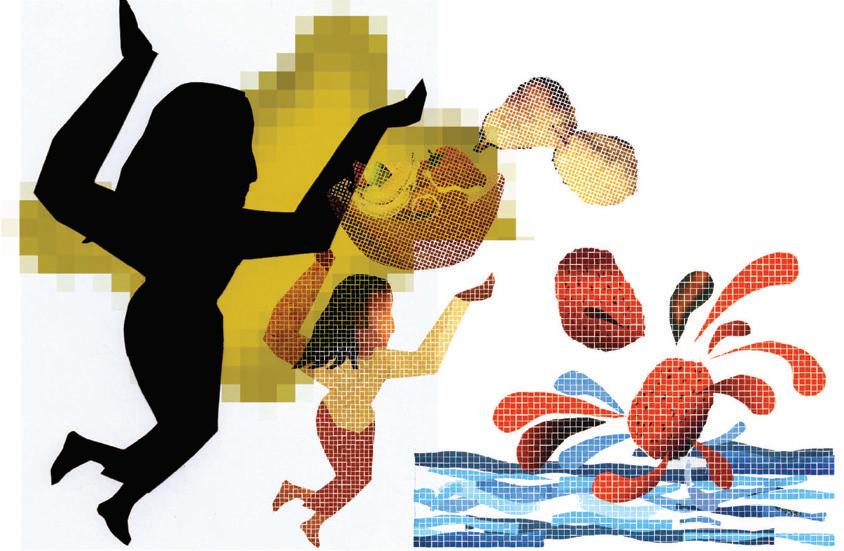
non-indigenous children draw, paint and illuminate the relationship we have with water, soil, and life.
Which work/image have you recently seen that really excited you?
Waves in the ocean because they are transient and never repeat.
What is your favorite biomimetic work of all time?
Ancestral wisdom that I hear from the wise men of the Purépechas and the Totonacs and the Mayas. I like biomimetic art that narrates and interprets this wisdom for a good or better life.
Frutero Pitaya | Desierto de Coahuila Carlos Mora | Somos AguaWhat is the last book you enjoyed?
Art & Physics: Parallel Visions in Space, Time, and Light by Leonard Shlain is a fascinating book that I have read several times.
What is your favorite motto?
“When in doubt, cut!” from Barbara Linkevich a movie editor … over time I realized that it applies to virtually everything.
What is your idea of perfect happiness?
Simply, the family.
If not a designer, what would you be?
A full-time cook
We would appreciate your feedback on this article:
 Nevado de Toluca Carlos Mora | Somos Agua
Nevado de Toluca Carlos Mora | Somos Agua




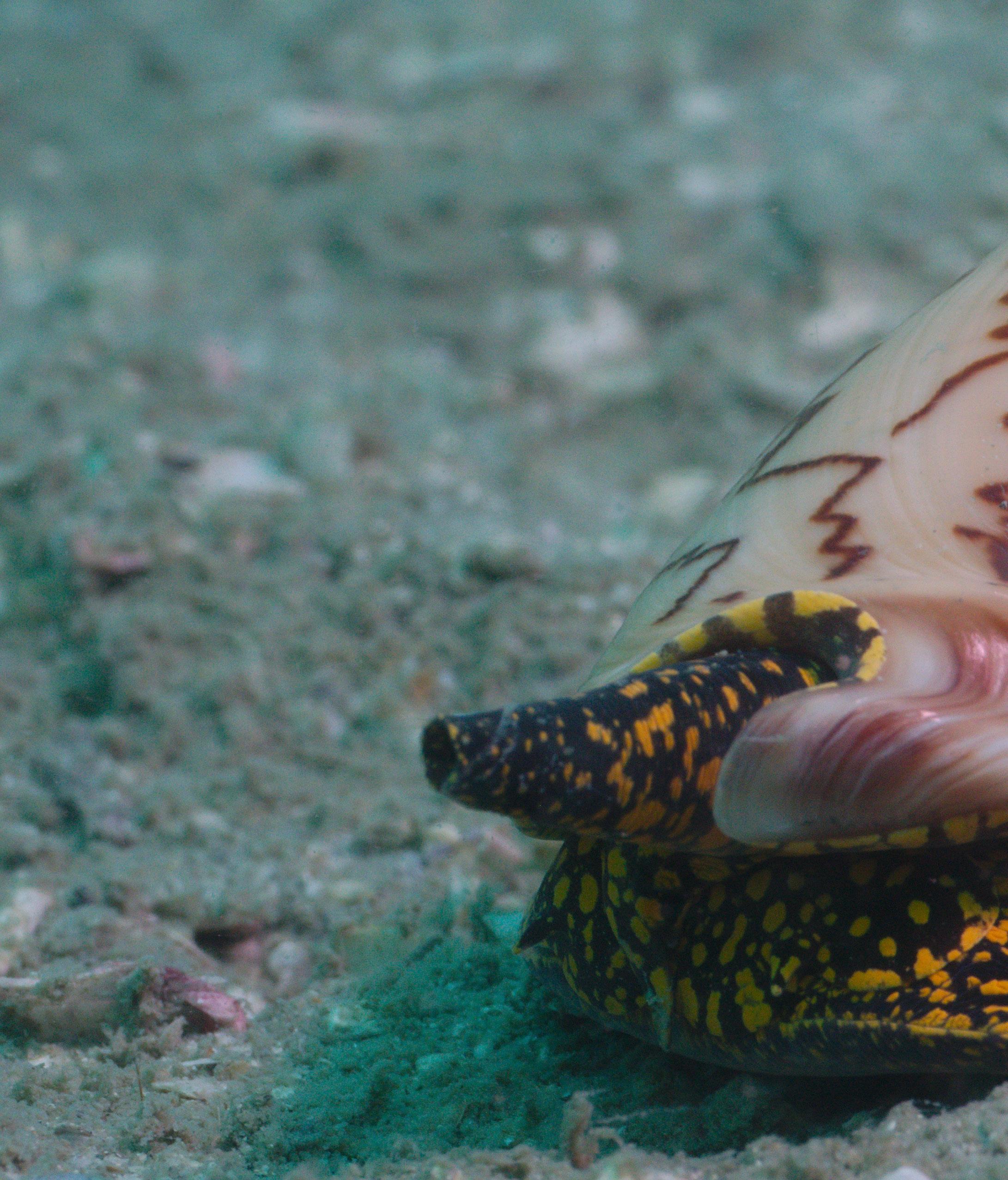 Cymbiola Nobilis
Photo: Eric Seigne, 2015 | Wikimedia Commons
Cymbiola Nobilis
Photo: Eric Seigne, 2015 | Wikimedia Commons

The Nature of Technology: What It is and How It Evolves is an insightful and thoughtprovoking yet accessible book that explores the essence of technology as a system rather than the development of individual technologies. Arthur’s background in economics and complexity theory (https:// www.santafe.edu/people/profile/w-brianarthur) led him to explore how different technologies are related and how they evolve.
In the first three chapters, Arthur defines the challenge: identify the "principles behind technology, some common logic that would structure technology and determine its ways and progress" (p9). He lays the foundations of a comprehensive technology theory based on the principle of “combinatorial evolution.” Although Darwinian evolution shares similarities in that variants and selection exist in technology, technological design is a human process not restricted to the slow accumulation of small changes.
Arthur characterises technology as the programming or orchestrating of natural phenomena to achieve a particular purpose. Since prehistory, we have observed and harnessed natural phenomena, a process more recently accelerated by scientific discovery. However, our ability to combine technologies in novel ways is increasingly driving technological advances, supported
by the trend towards encapsulating function in components and subassemblies (modularity), each of which is itself a technology (recursiveness). We are currently experiencing an explosion of computing capabilities as previously complex algorithms are now available as components with well-defined interfaces. Technology is constantly evolving, creating new opportunity niches, shedding technologies that no longer provide value, and advancing our ability to discover novel natural phenomena. “Technology, once a means of production, is becoming a chemistry” (p27).
Chapters four and five describe combination-based “standard engineering” as creative problem-solving at multiple levels, from the desired outcome up to a high-level concept and down through the integration of components/subassemblies, with many cycles in between. Often the first step is selecting the right “technology domain,” a cluster of technologies that share common processes, components, and purposes. Innovation occurs within domains, but larger leaps are possible when new domains displace existing domains, such as the switch from mechanical/hydraulic control in aeroplanes to digital “fly-by-wire” systems that increase reliability, reduce weight, and expand aeronautical capabilities. A new domain expands what is possible
by providing new components and a new language for integrating those components to achieve existing as well as new purposes.
Chapters six through eight explore the development of revolutionary technologies that are based on new principles derived from novel phenomena. These principles often achieve a certain level of development yet are not adopted until progress within a technology domain hits fundamental barriers or becomes too complex. Even then, adoption may be slowed by the cost of redesigning supporting systems, evaluating
the risks of the new, and understanding the longer-term economic, financial, and policy implications. Arthur describes stretching the capabilities of reciprocating engine aeroplanes to fly higher and faster, even though jet engines were available, until fundamental limits in the existing approaches were reached. Only then did the principles and paradigms of jet power gain traction and become commercially viable.
Chapters nine and ten explore in greater depth the concept that technology is “selfproducing,” an ever-expanding web of
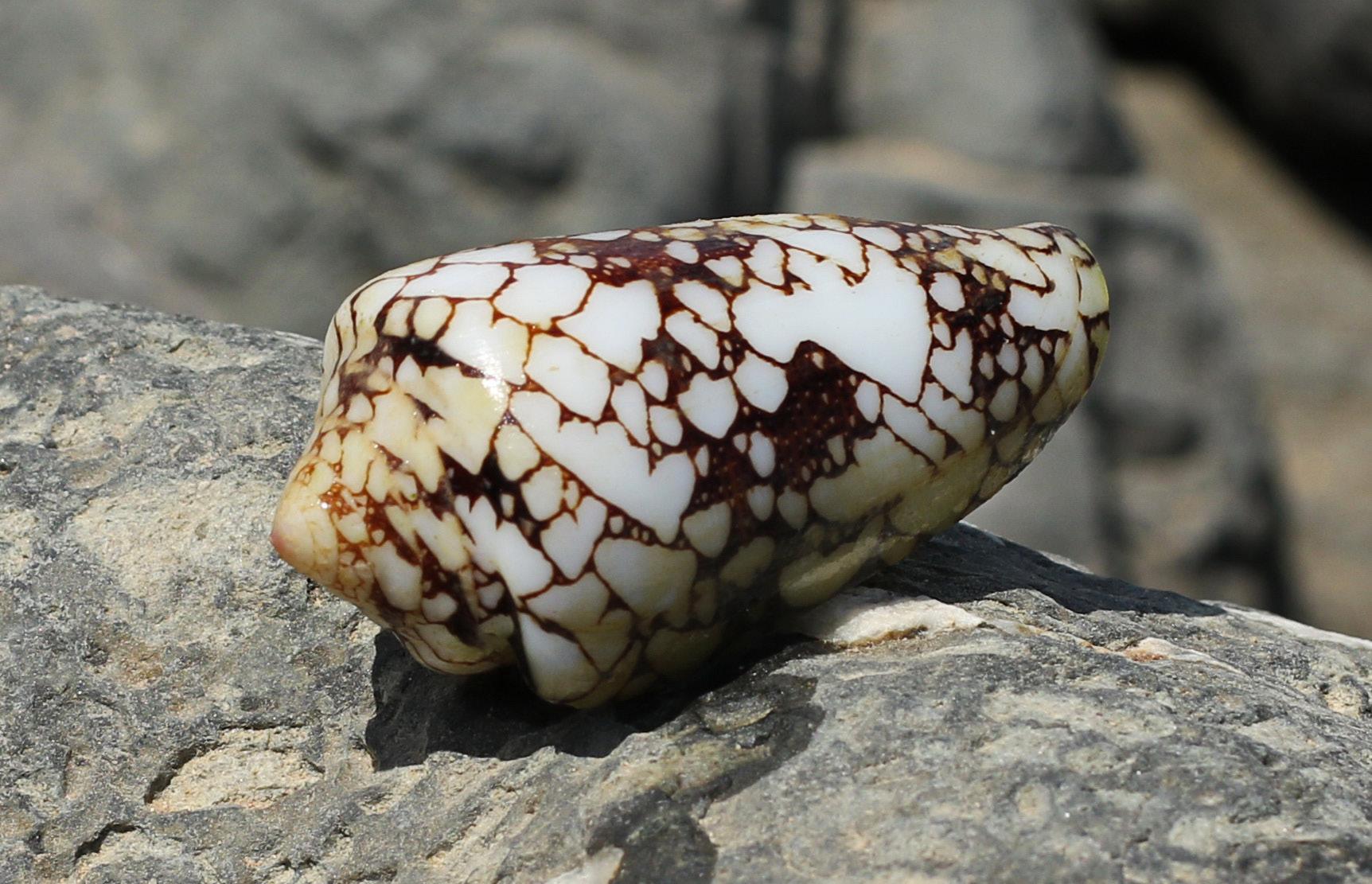 Conus Textile: Patterns of some seashells, like the ones in the genera Conus and Cymbiola, are generated by natural cellular automata. The pigment cells reside in a narrow band along the shell's lip. Each cell secretes pigments according to the activating and inhibiting activity of its neighbor pigment cells, obeying a natural version of a mathematical rule.
Photo: Kora27, 2017 | Wikimedia Commons
Conus Textile: Patterns of some seashells, like the ones in the genera Conus and Cymbiola, are generated by natural cellular automata. The pigment cells reside in a narrow band along the shell's lip. Each cell secretes pigments according to the activating and inhibiting activity of its neighbor pigment cells, obeying a natural version of a mathematical rule.
Photo: Kora27, 2017 | Wikimedia Commons

technology components that are constantly combined to further enrich individual and collective technologies. Arthur argues that the economy is more than a “system of production and distribution and consumption.” Technology and the economy are tightly coupled: “Technology creates the structure of the economy, and the economy mediates the creation of novel technology (and therefore its own creation)” (p165) by identifying needs, assessing commercial viability, and creating opportunity niches. Economies and technologies are constantly evolving in concert at an accelerating pace.
In the last chapter, Arthur summarises the book and explores the relationship of technology and the natural world. Arthur claims “Our deepest hope as humans lies in technology; but our deepest trust lies in nature" (p15). He suggests we are experiencing a degree of convergence: the tools of science and technology are helping us understand biology at a deeper level, while technology is becoming more bottom-up and adaptive through “networks of parts that sense, configure, and execute appropriately” (p176). Combinatorial evolution is increasingly driving the economy as it shifts from primarily producing material objects
Cymbiola Nobilis - Koh Rong Samloem (Cambodia) Photo: Eric Seigne, 2015 | Wikimedia Commonsto developing relationships that help make sense of complex challenges. “Order, closedness, and equilibrium as ways of organizing explanations are giving way to open-endedness, indeterminacy, and the emergence of perpetual novelty” (p180). As technology continues evolving, we have the opportunity to create technologies that enhance our individuality and humanness.
The Nature of Technology does not discuss bio-inspired design (BID) but helps illuminate some of the challenges faced by BID. In a sense, BID is at the pre-history stage of technology, but is competing with current technologies building on a foundation of components and subassemblies. BID will eventually build a similar base but currently its components remain few and fragmented.
BID could benefit by focusing on:
• Novel ways of combining existing technological components (Encycle, Interface Entropy, George’s Wood, Sharklet, PowerCone).
• New ways of programming/orchestrating effects at the systems level (Encycle).
• Identifying and actualising novel principles from nature (Encycle, Interface Entropy, George’s Wood, Sharklet, PowerCone).
• Improving existing technology components that have reached their performance limits (PowerCone).
These initiatives are not independent. The Encycle power controllers1,2 are built using standard technological components that interact with each other using distributed control based on principles of emergence. The Interface Entropy carpet tile3 uses traditional manufacturing but leverages diversity to hide variations in colour and shading, rather than striving for increased colour uniformity. George’s Wood4 is a composite material in which the fibres are aligned in a specific arrangement. Sharklet5 was able to leverage FLEXcon’s manufacturing capabilities to develop micro-structured films that inhibited bacterial growth. Church’s PowerCone6 uses wind turbine blade construction techniques but in a shape that leverages “time-dependant energy transfer” to solve the rotor root suction problem better than the GE ecoROTR. These examples show the importance of not only understanding the biology but also the technological enablers that can help make BID successful.
Arthur describes how technology is becoming increasingly complex which often involves additional control mechanisms that drive costs and can lead to brittleness. What can we learn from nature to deal with
 Reviewed by Norbert Hoeller and Richard James MacCowan
Reviewed by Norbert Hoeller and Richard James MacCowan
complex challenges that do not lend themselves to ‘best’ or even ‘good practice’?7 Designers and engineers need help dealing with complexity without over-simplifying the situation or becoming overwhelmed. A BID example is Ecological Network Analysis8, a platform where organisations can map complex flow networks, identify health metrics, apply heuristics from ecological research, and model proposed interventions. Research by the Bio-inspired Systems Lab (https://astridlayton.com/) suggests ecological systems favour redundancy/adaptability over efficiency based on a wide range of examples that demonstrate long term benefits. As organisations become more aware of their environmental impacts, ENA can open up opportunities for ecological engineering (https://en.wikipedia.org/wiki/ Ecological_engineering).
Consistent with Arthur’s description of how technology is evolving, those working in BID should embrace the generative economy where we shift from units of production to the ability to translate our stock of deep expertise into ever new strategic combinations, similar to how nature rearranges the building blocks of life to create functional materials with different properties. We have an opportunity to shift "technology as faceless and will-deadening [to being] organic and life-enhancing" (p184)
by helping integrate nature and technology through initiatives such as Dunn’s “laws of biology”9, nature based solutions, ecological engineering, and digital twins (including Ecological Network Analysis) that help us better understand natural systems in real time and as well as our place in them. As Prof. Julian Vincent points out, "The sooner people stop thinking about biology and start thinking about the nature of the problem, the sooner people will understand biomimetics. It’s a matter of thinking more at the systems level."
We would appreciate your feedback on this article:
1. The Power of Ants and Bees, https://issuu. com/eggermont/docs/zq_issue_01final/68
2. The Blackout and the Bee https:// issuu.com/eggermont/docs/ zq_issue_22_final/108

3. Biomimicry Case Study - The Story of Entropy, https://bioinspired.sinet. ca/files/bioinspired/newsletters/ biomimicry_newsletter_v3.3.pdf#page=7
4. George's Wood, https://issuu.com/ eggermont/docs/zq_issue_22_final/46
5. What a Drag! You Mean These Bumps Didn’t Make Me Swim Faster?, https://issuu. com/eggermont/docs/zq_issue_08_final/8
6. Putting the Nosecone to Work, https:// issuu.com/eggermont/docs/zqissue16/88
7. Snowden, D. J., & Boone, M. E. (2007). A leader’s framework for decision making. Harvard Business Review, 85(11), 68.
8. The Ecology of Human Infrastructure, https://issuu.com/eggermont/docs/ zqissue17/28
9. Review: A Natural History of the Future https://issuu.com/eggermont/docs/ zq_issue_31_final/94
Richard James MacCowan is an awardwinning designer with a background in international real estate finance and development, urbanism, and industrial design. He is the founder and biofuturist of Biomimicry Innovation Lab specialising in manufacturing, agriculture, and cities. This has culminated in work across North America, Europe, Africa, and Asia. Richard is also the founder of the non-profit Biomimicry UK, and the CEO of an equine technology startup, Smart Stable Limited. He combines this with extensive research development with international collaborators as exemplified in the research for The State of Nature-inspired Innovation: https://www. biomimicryinnovationlab.com/research


